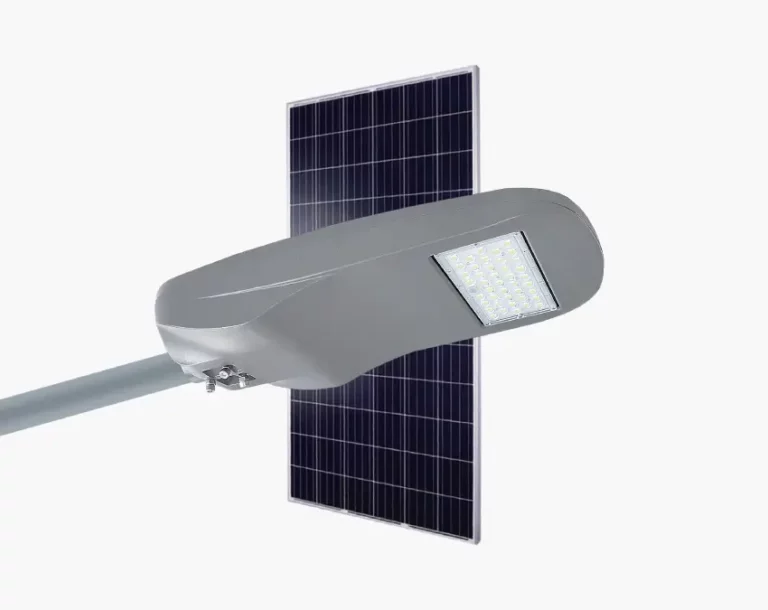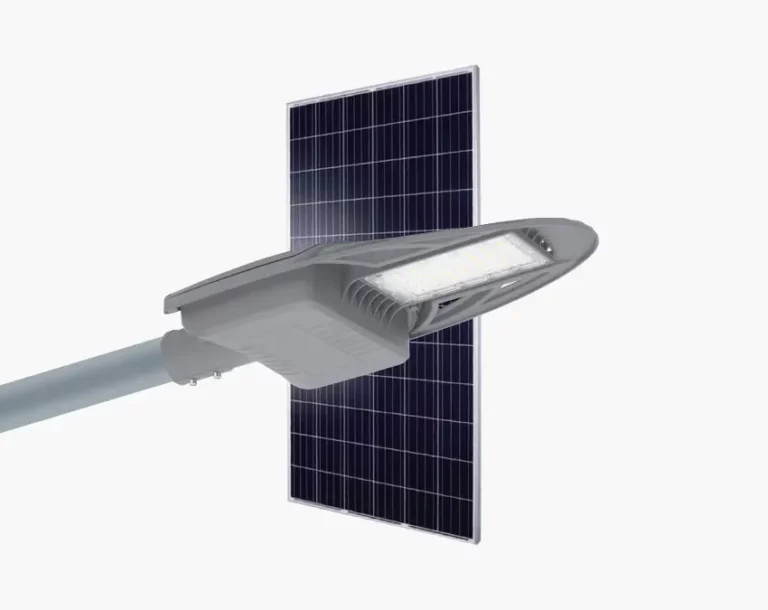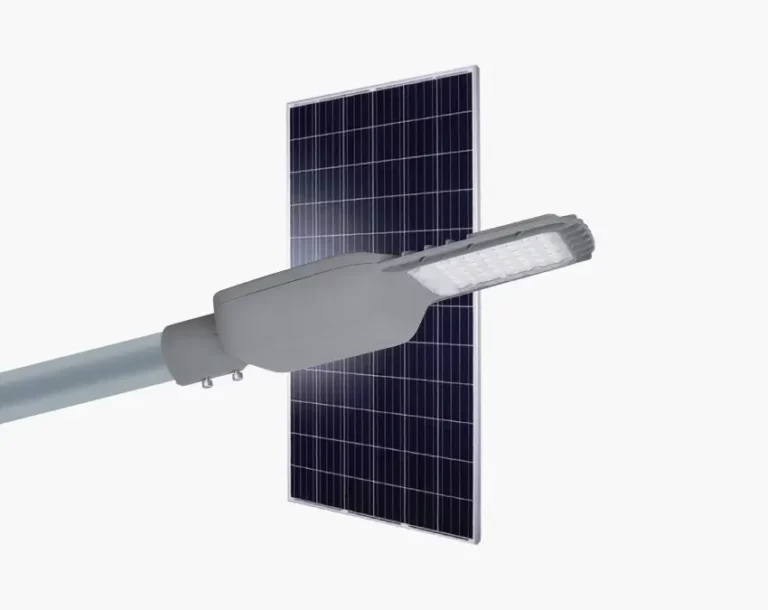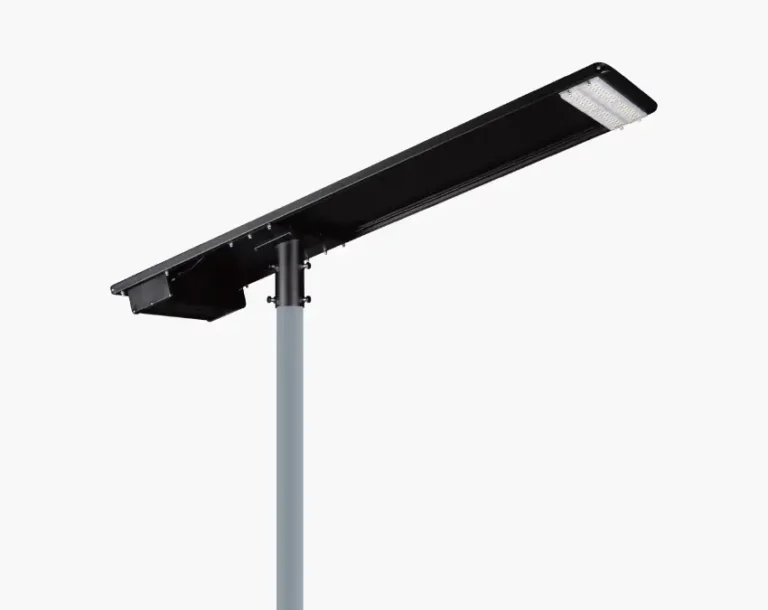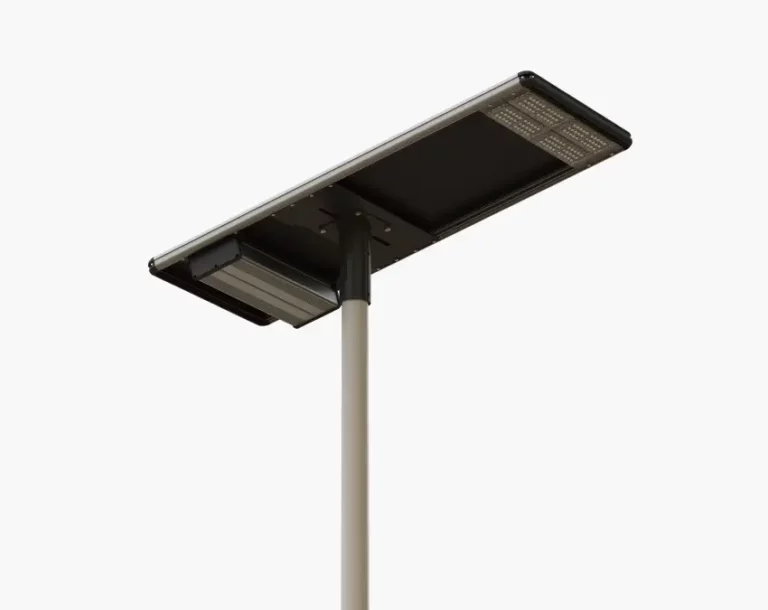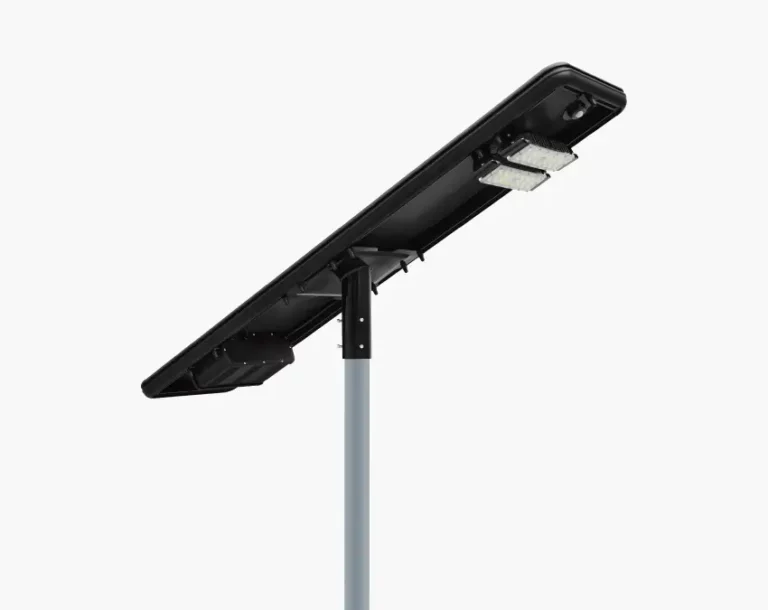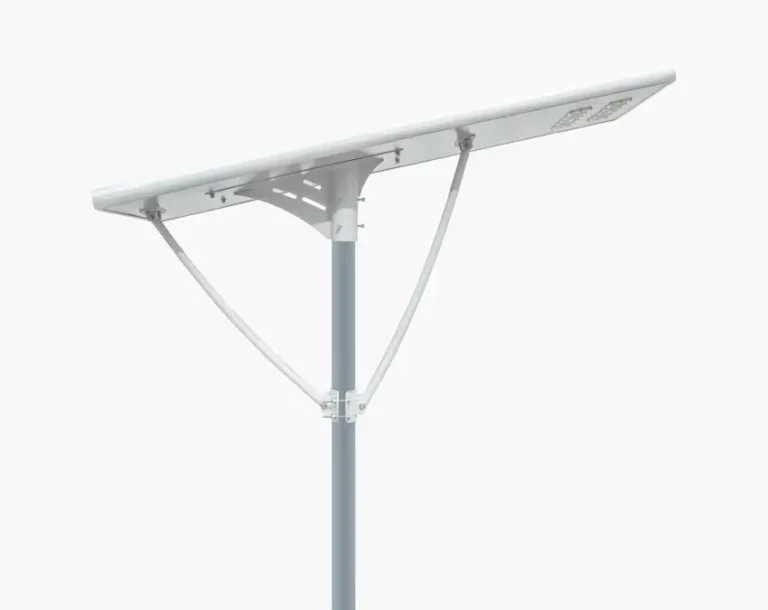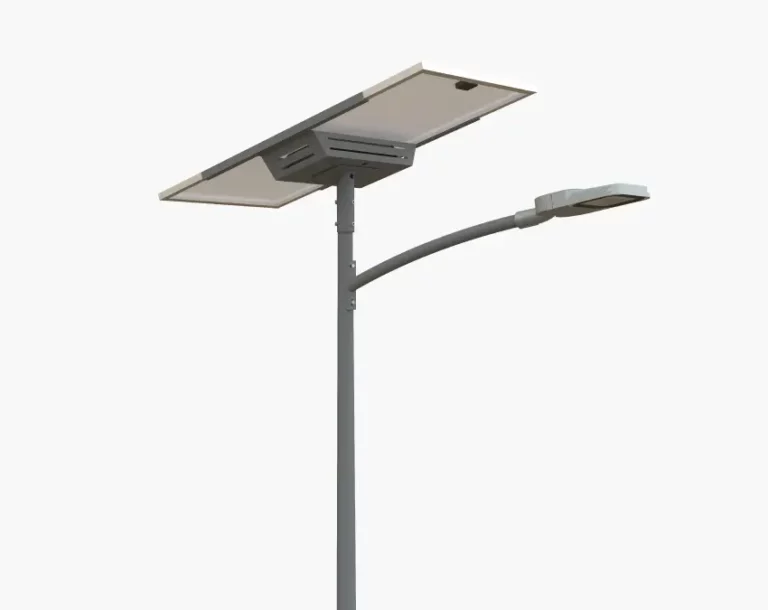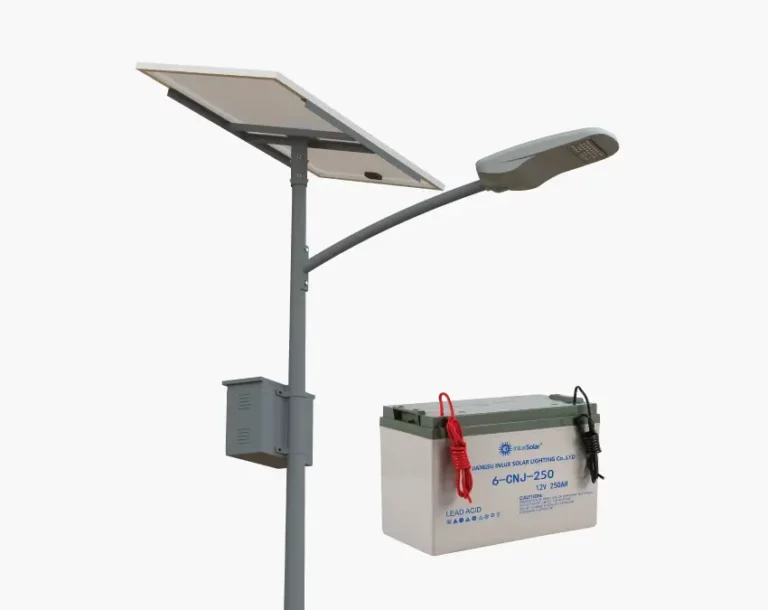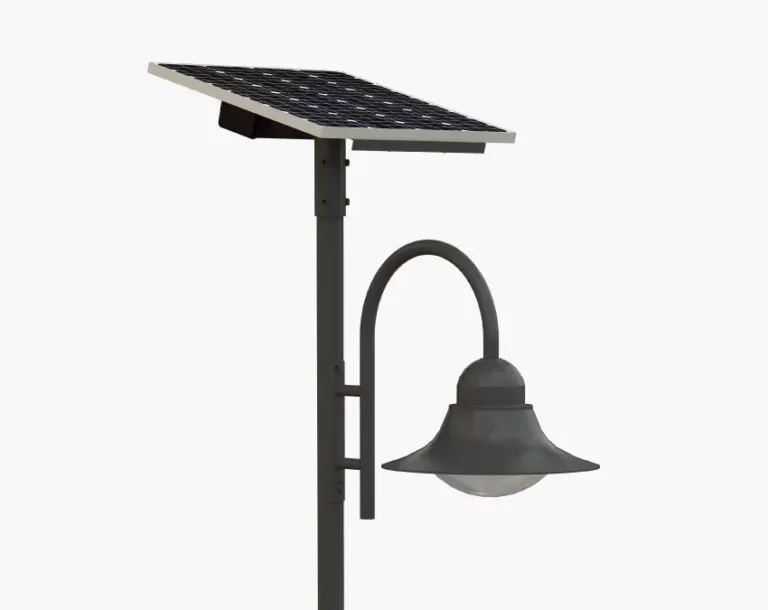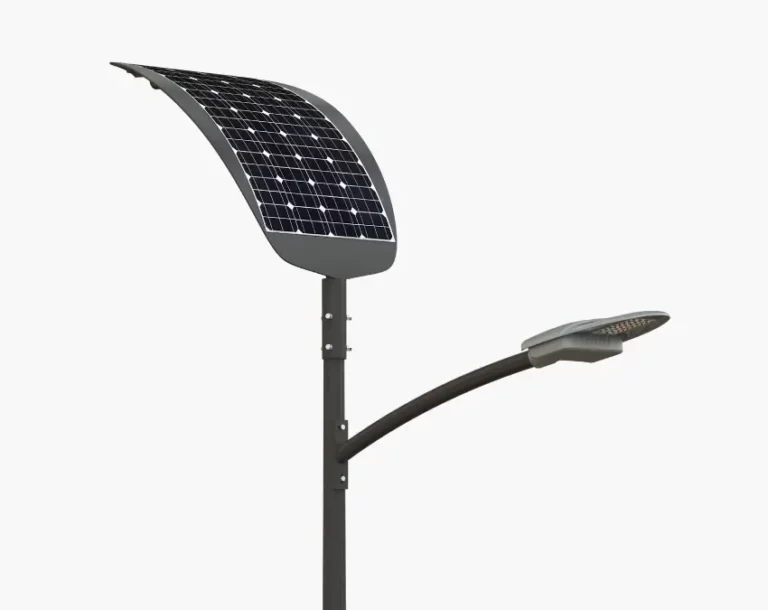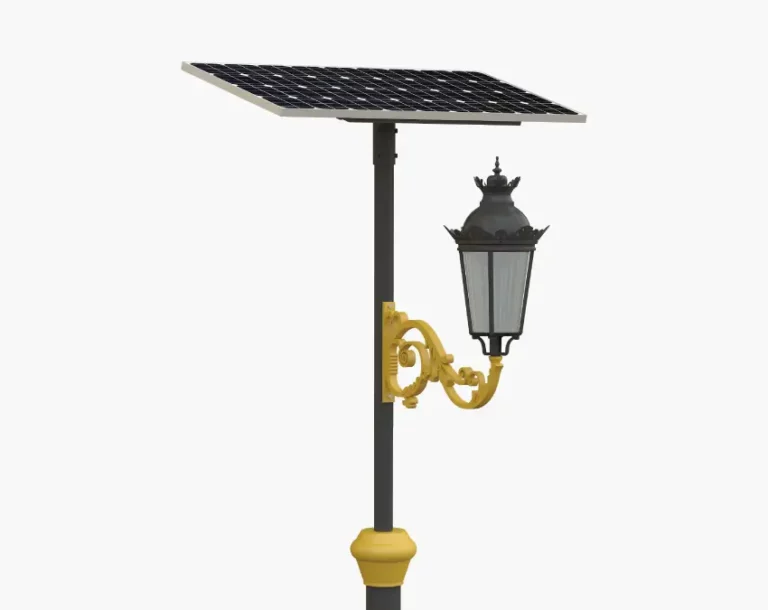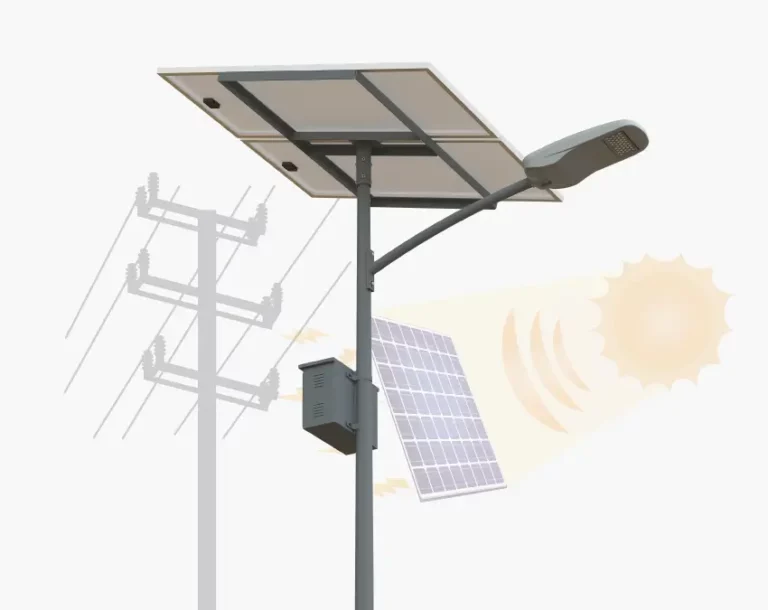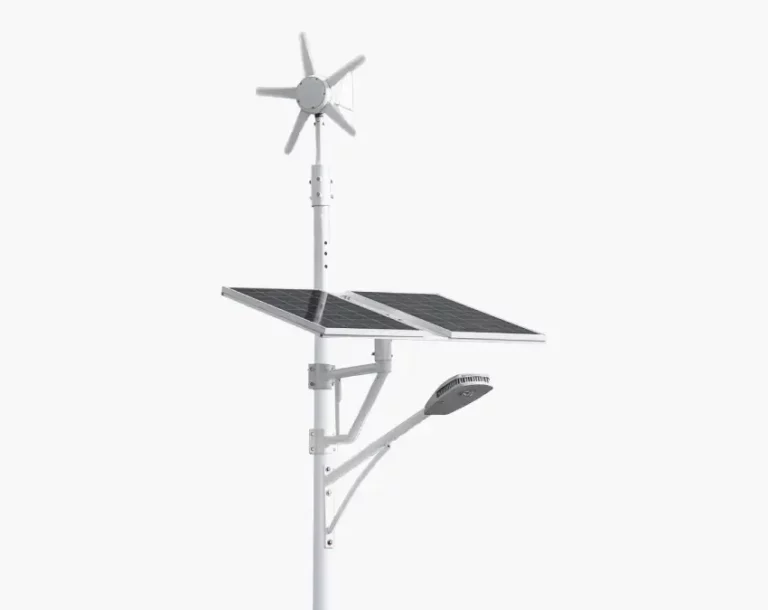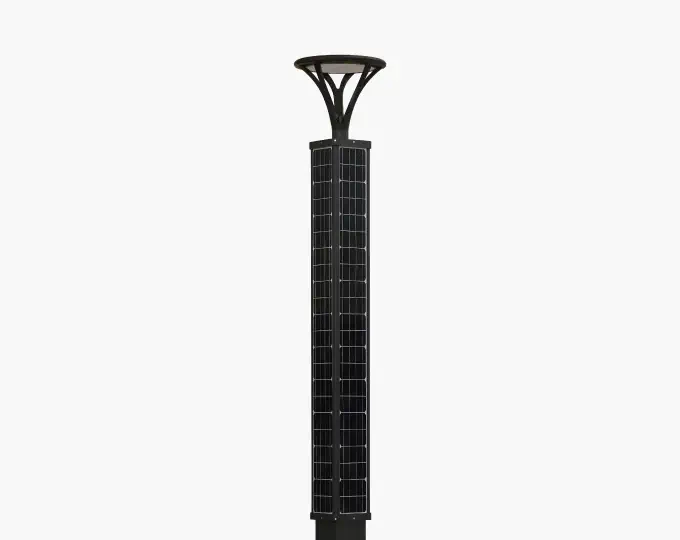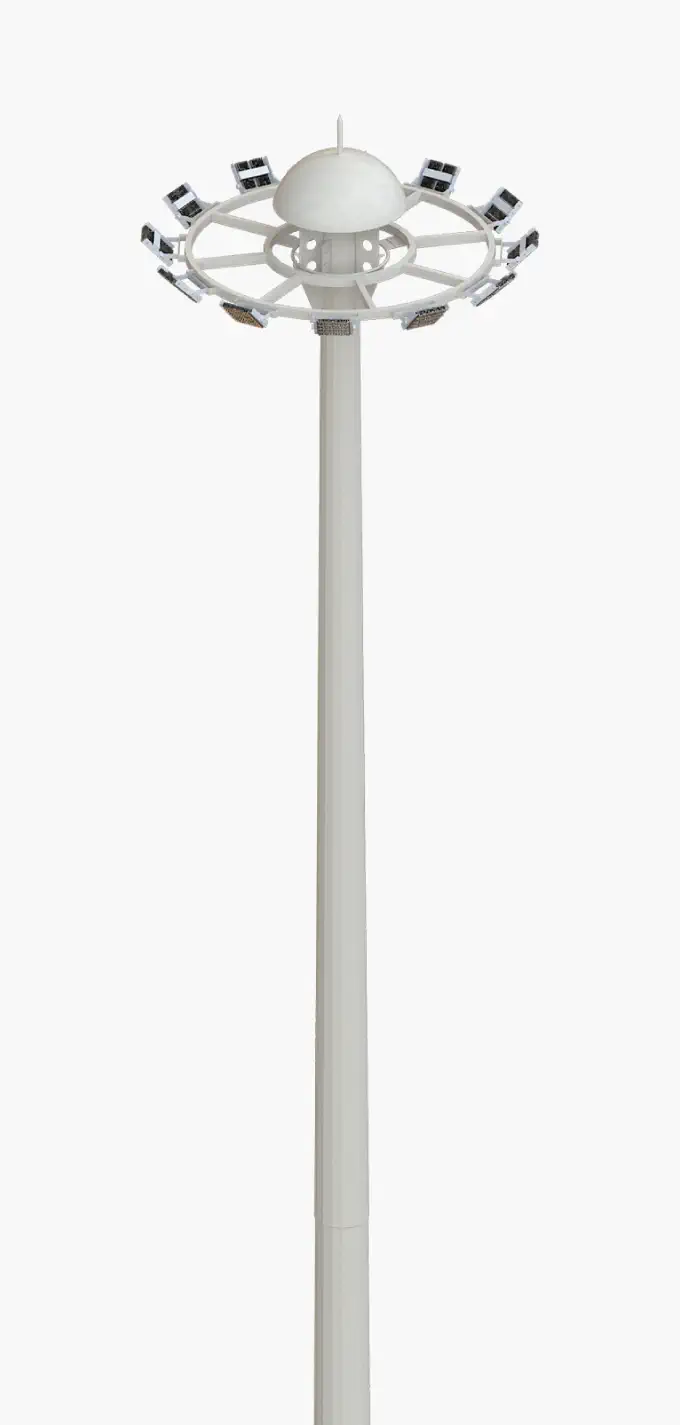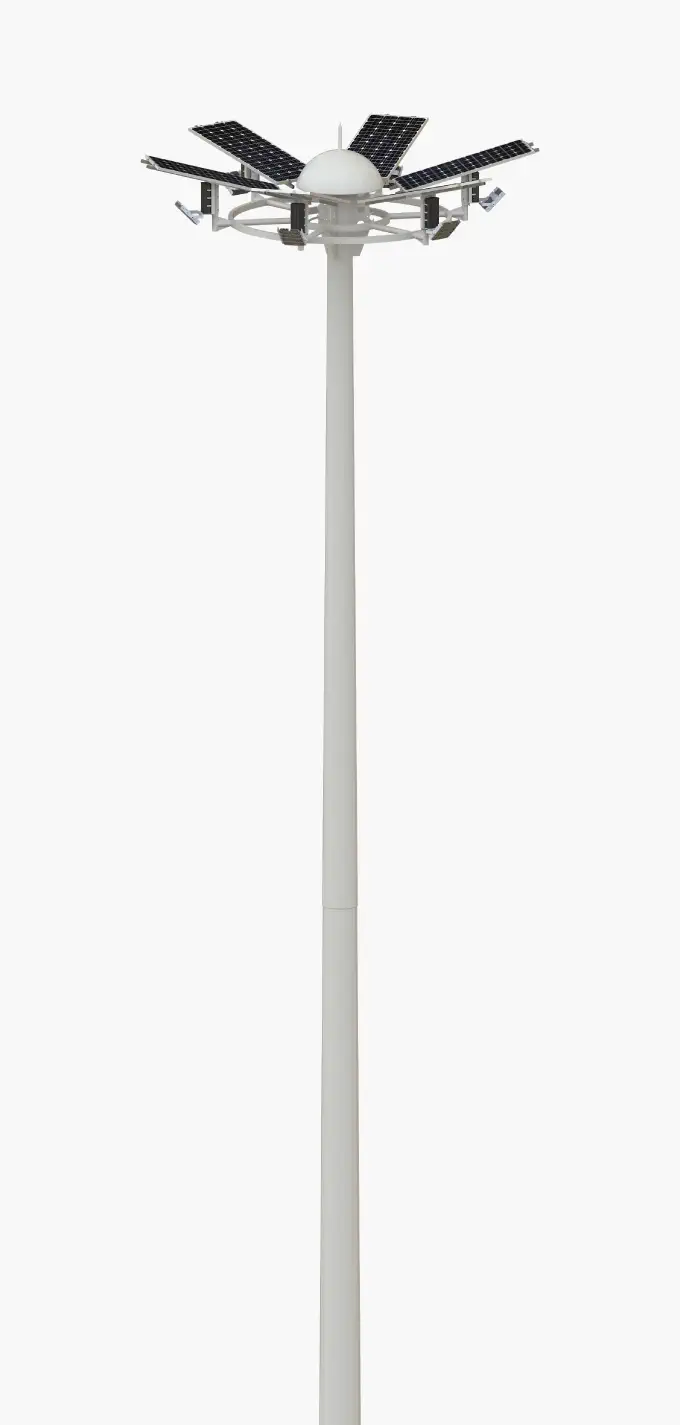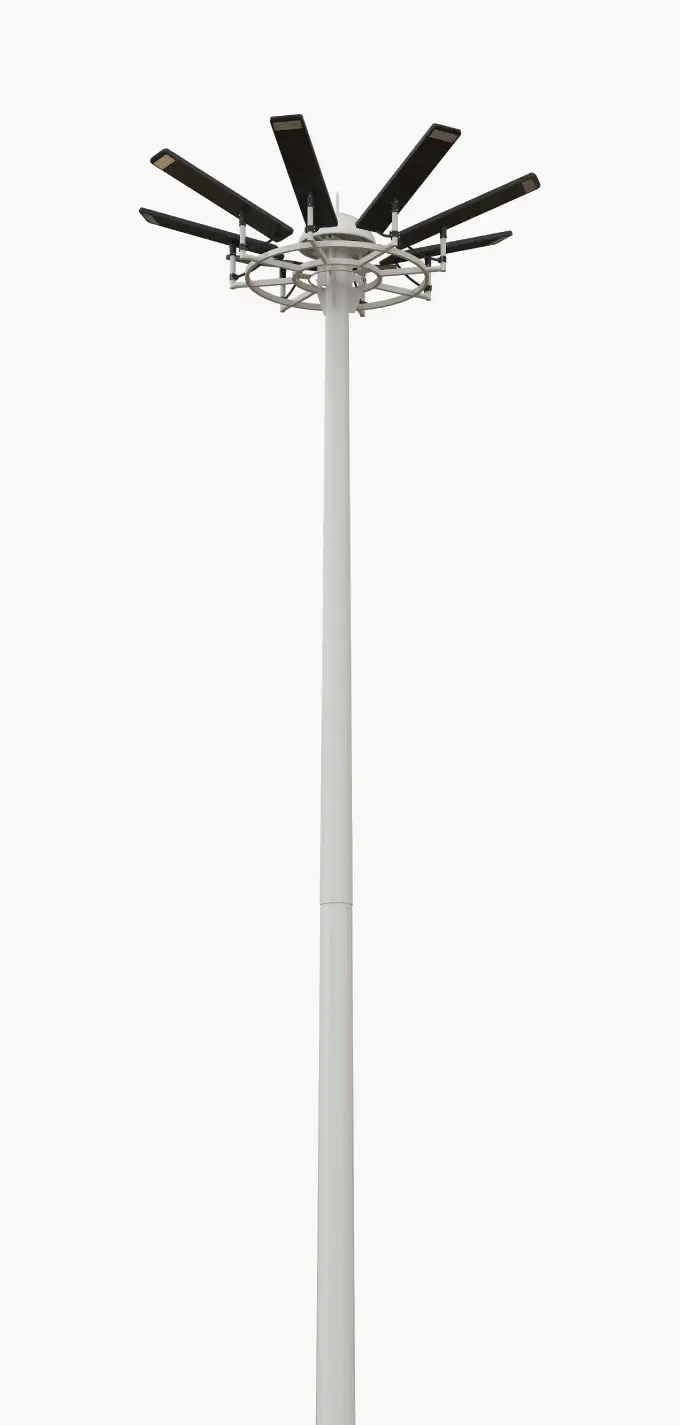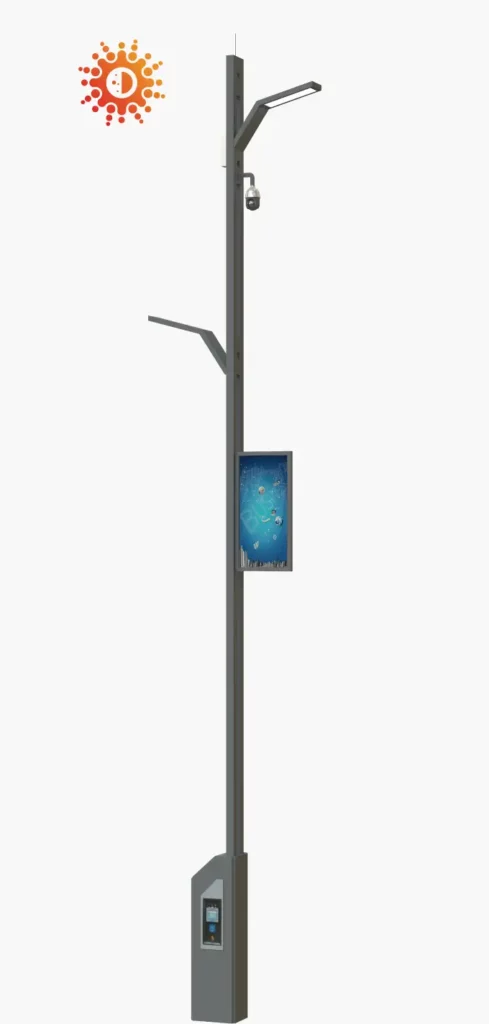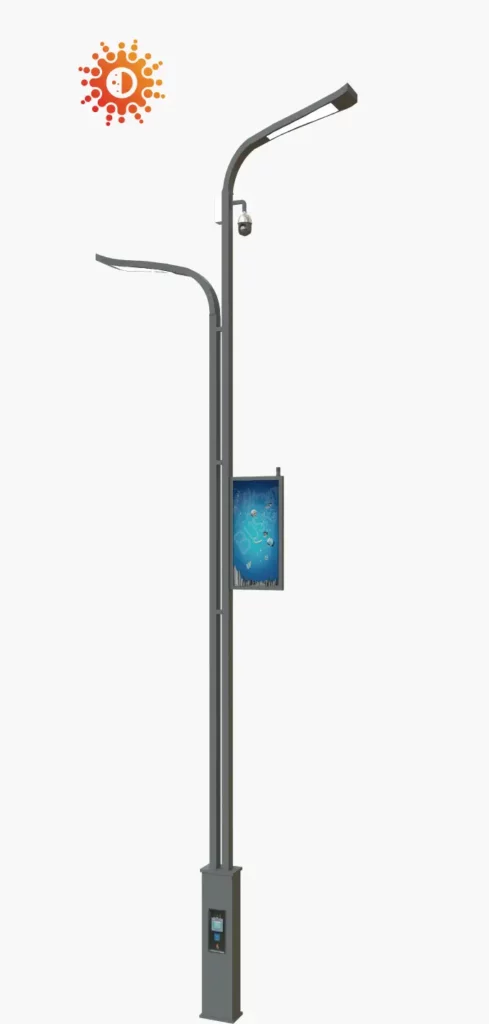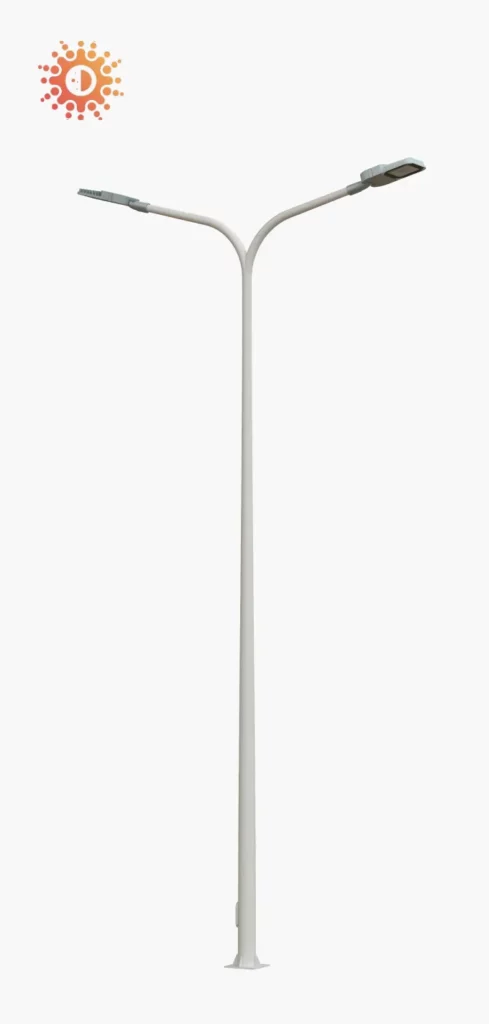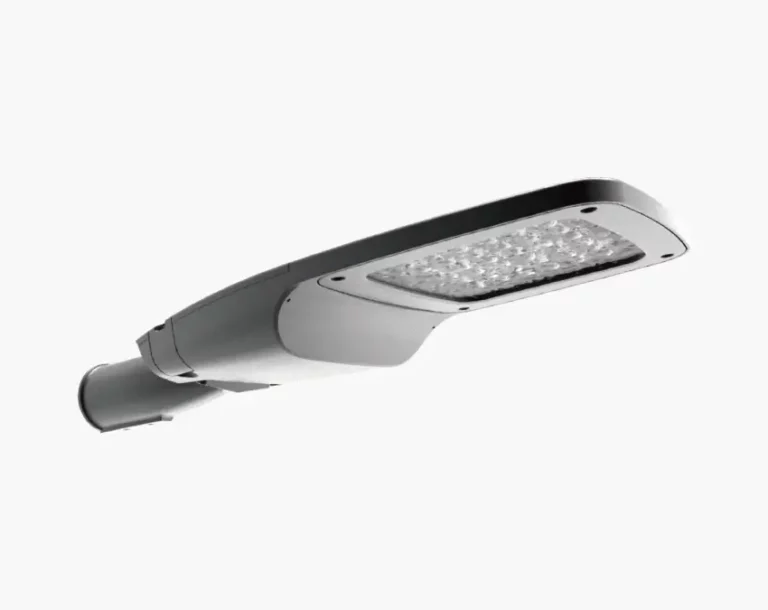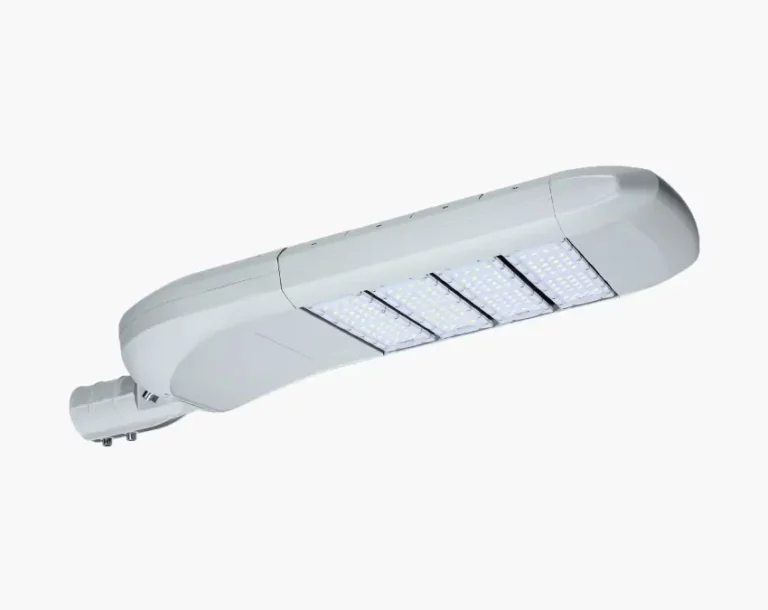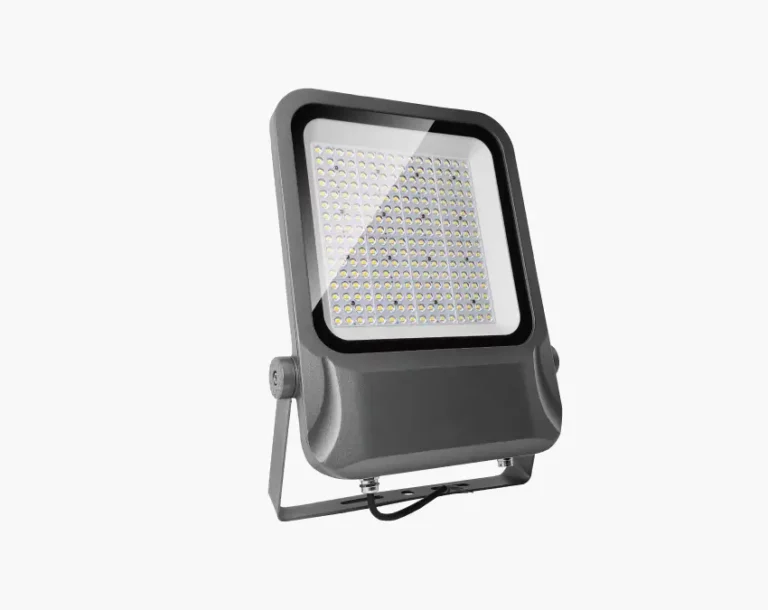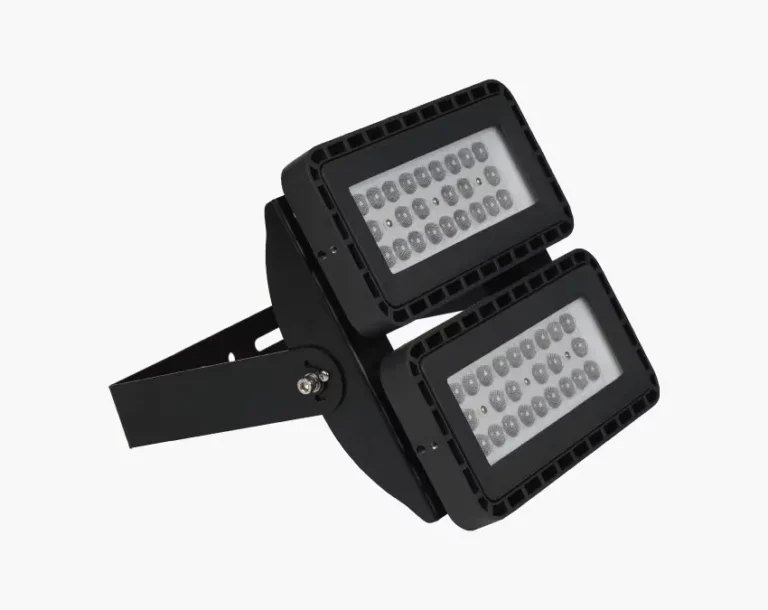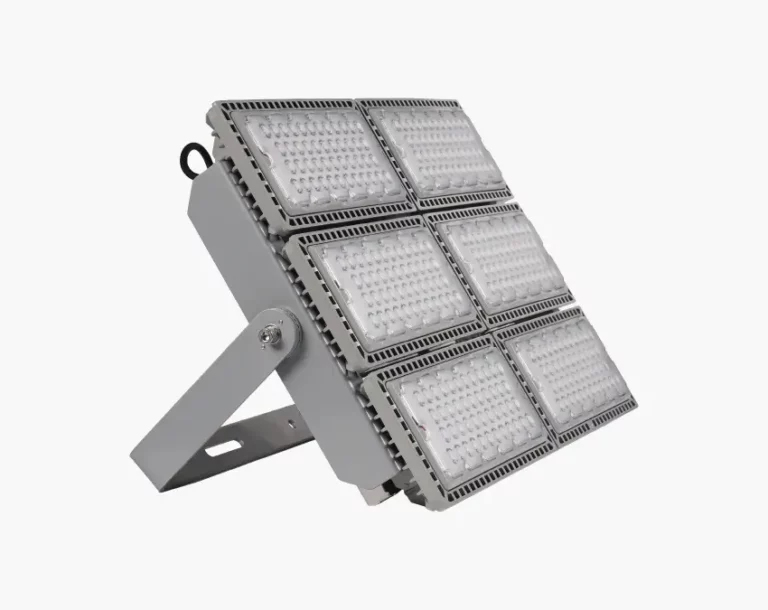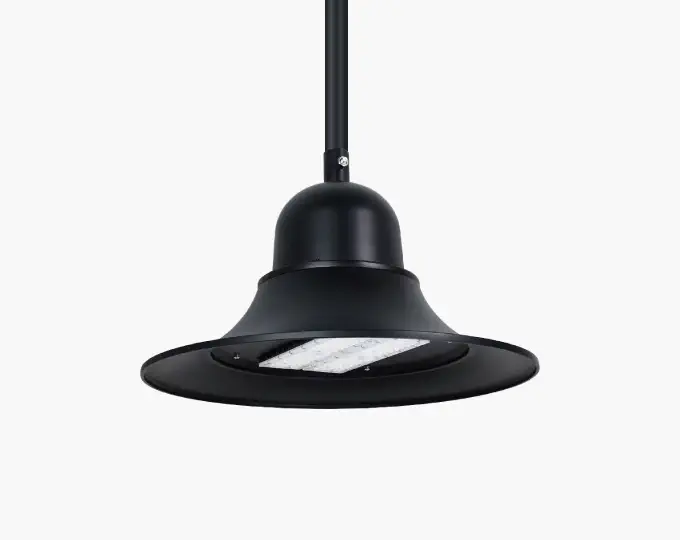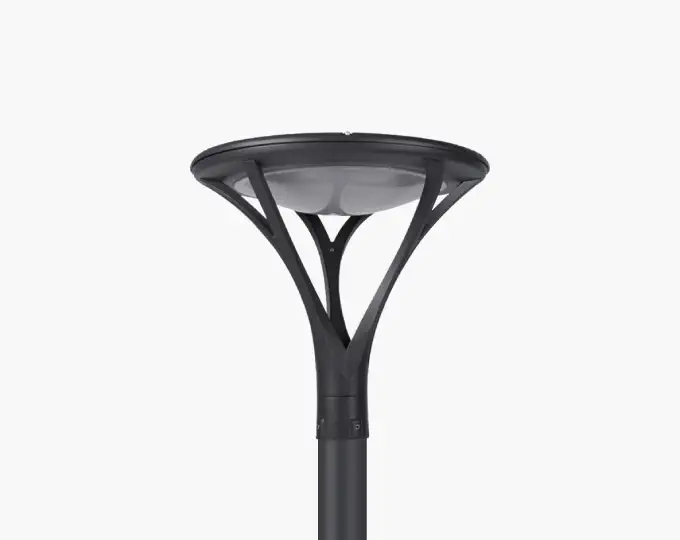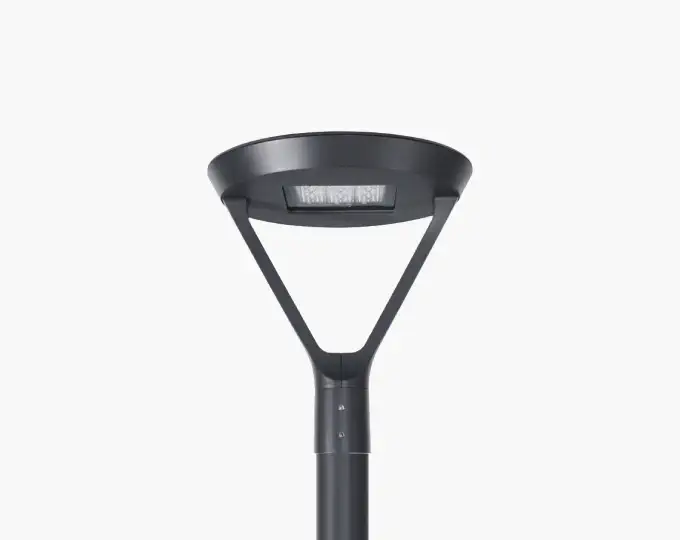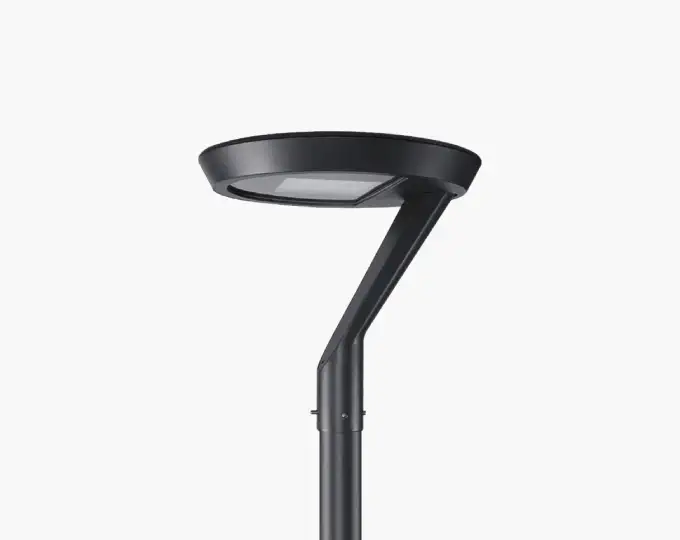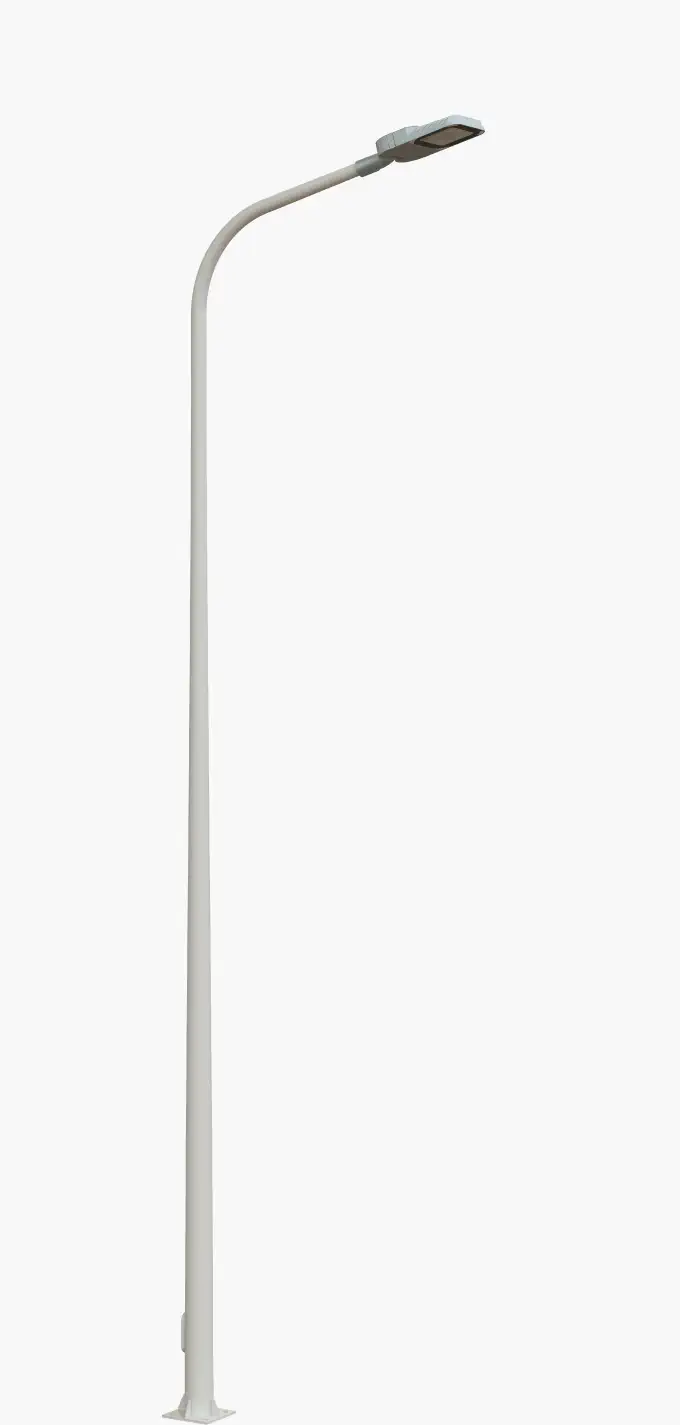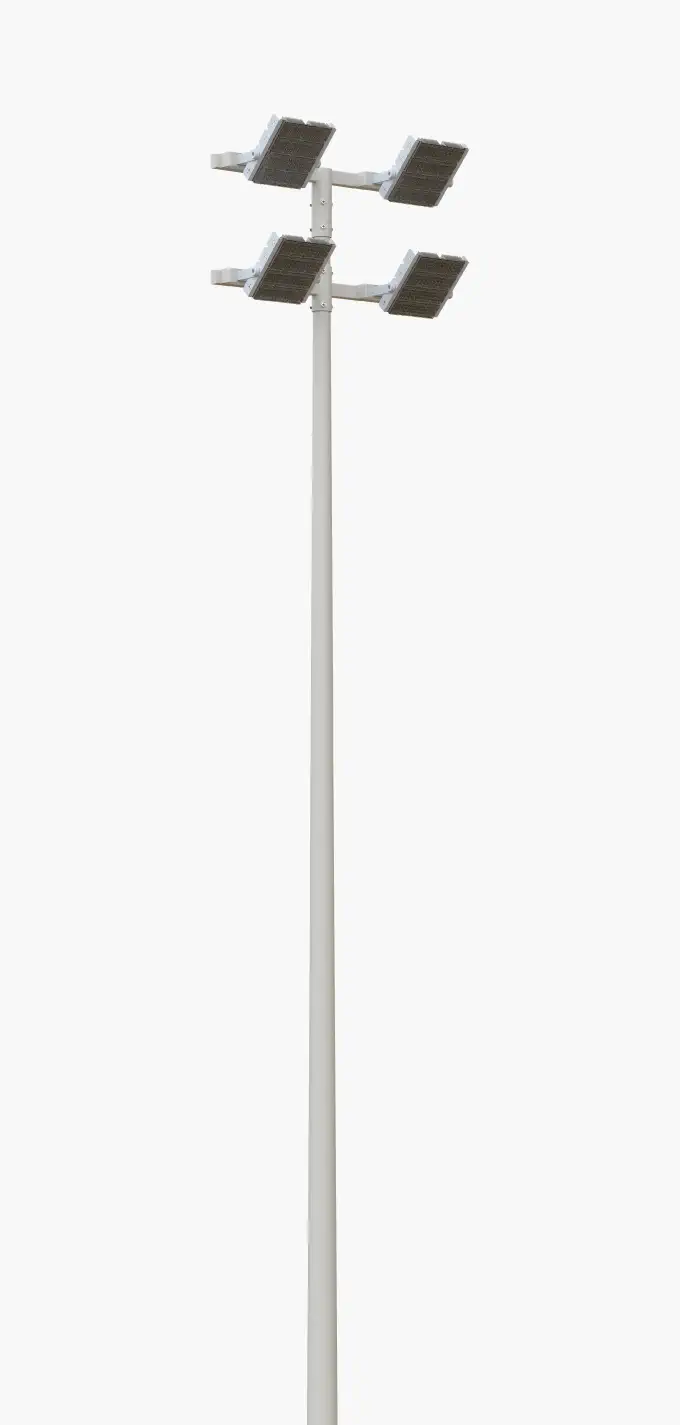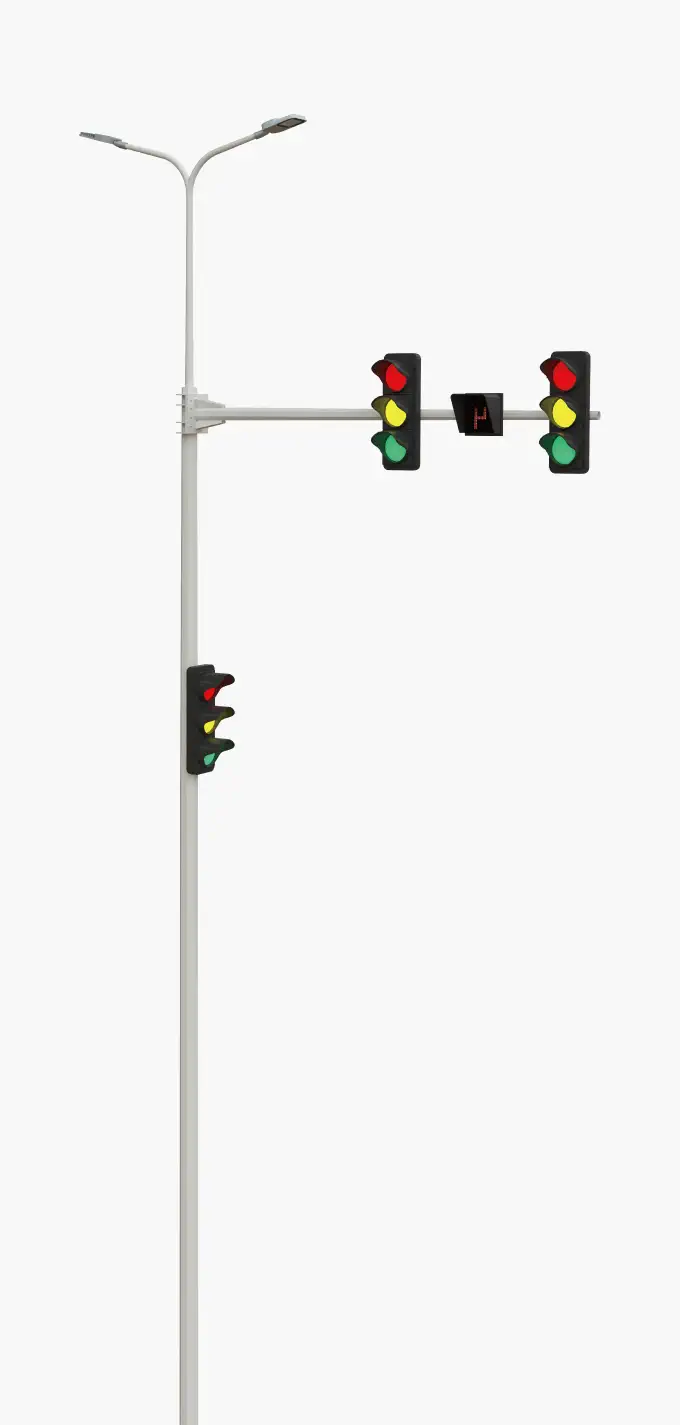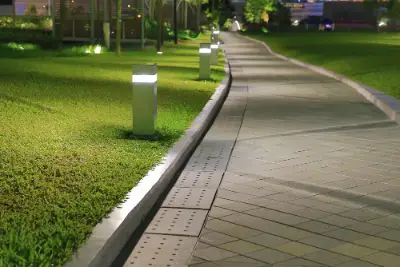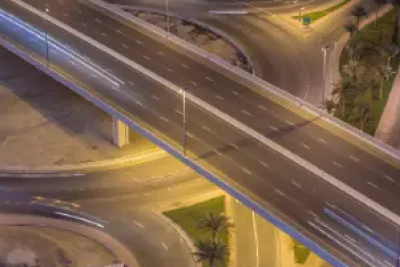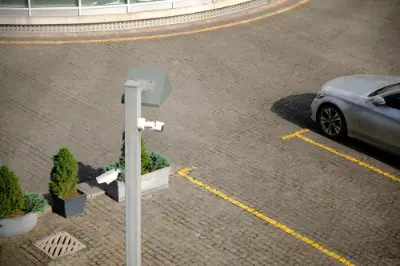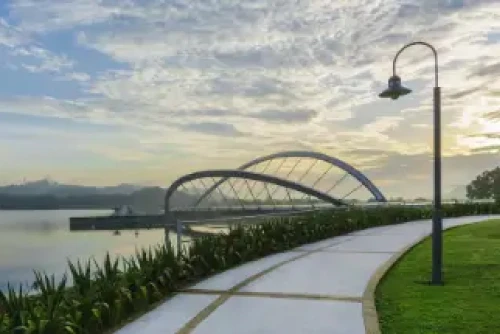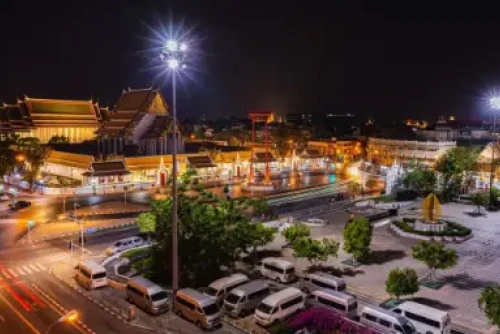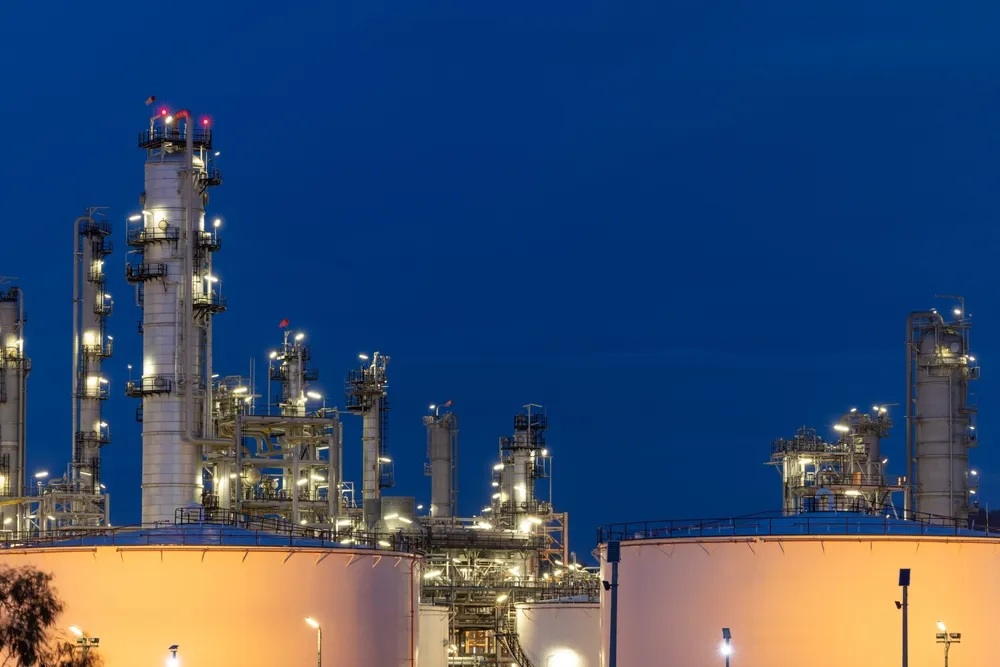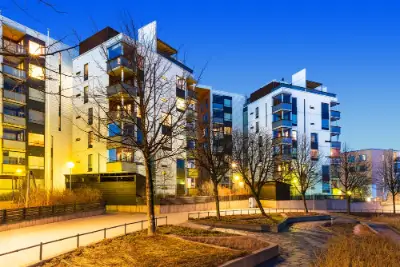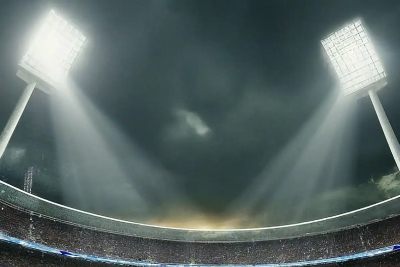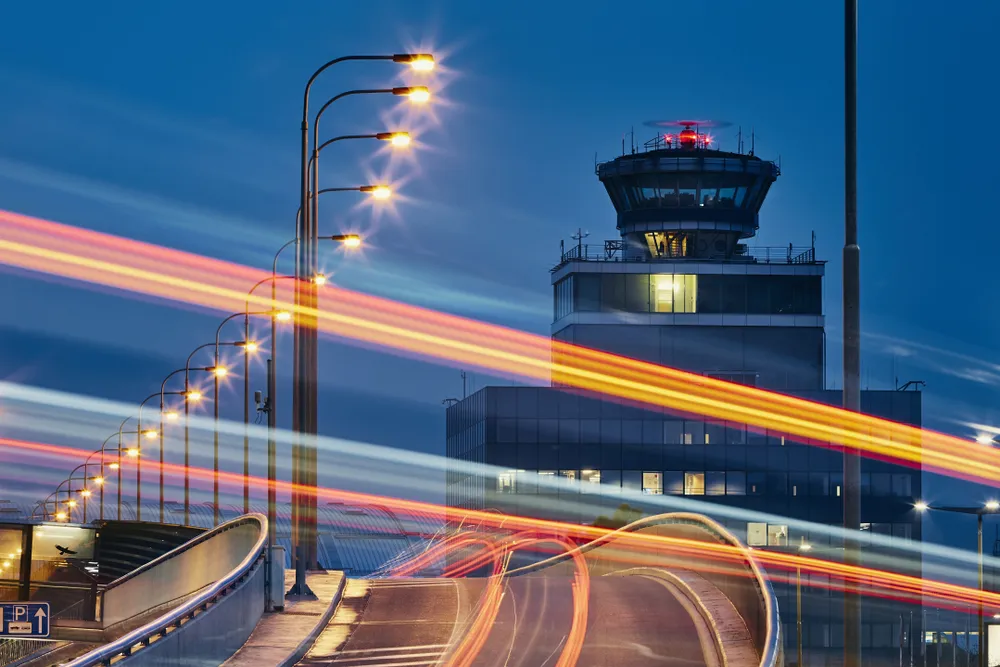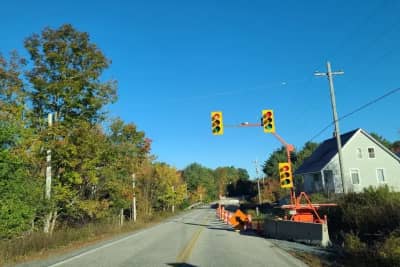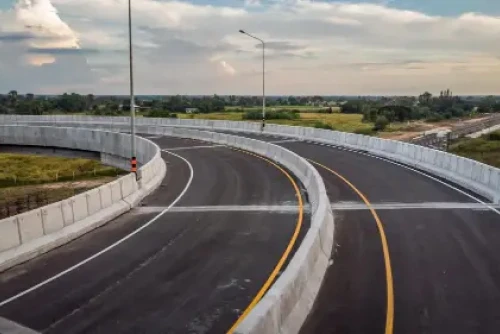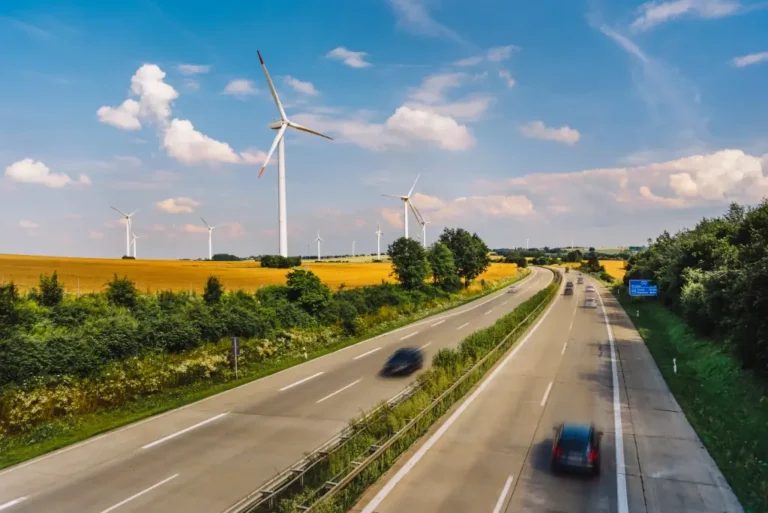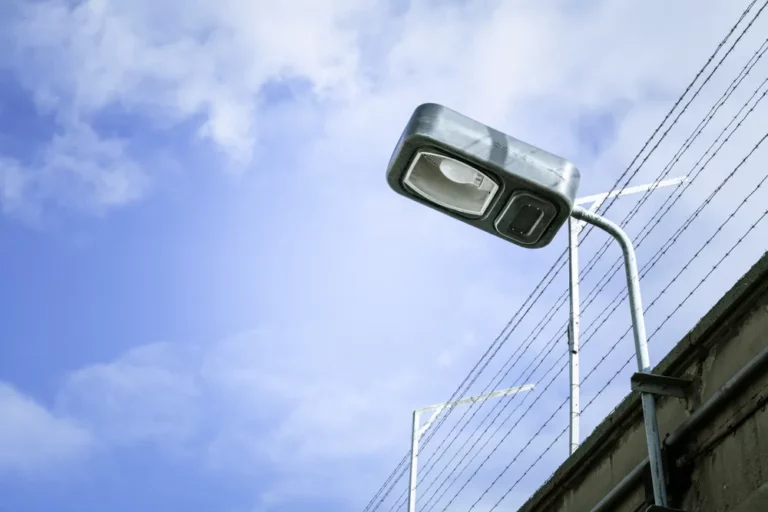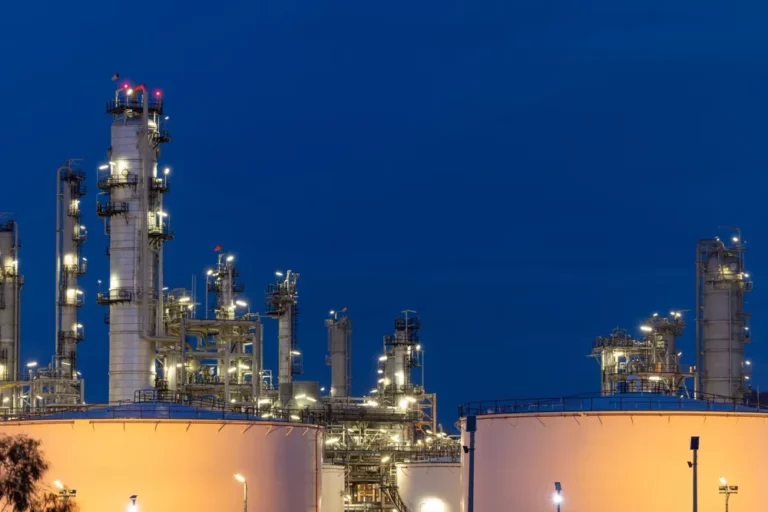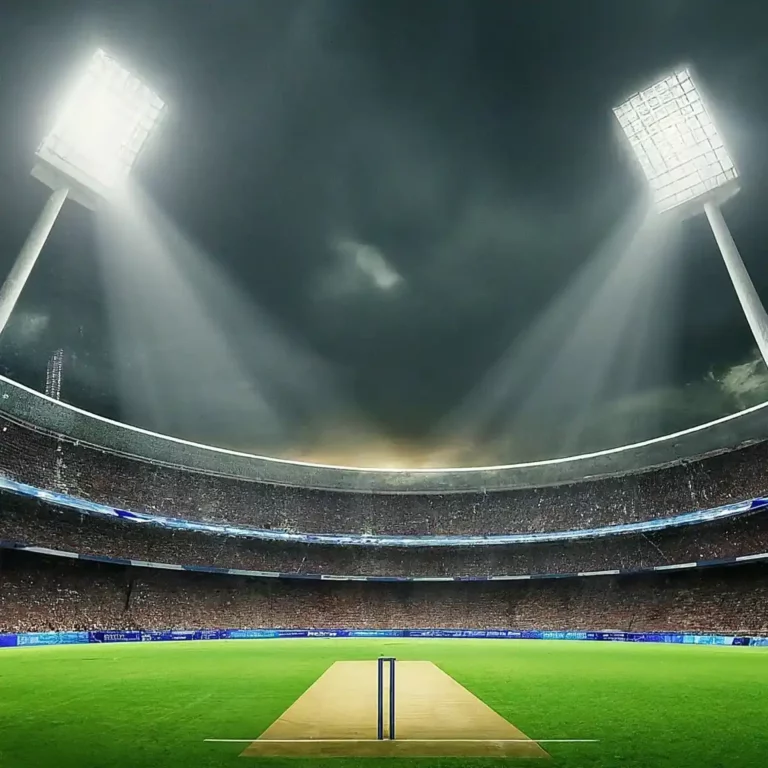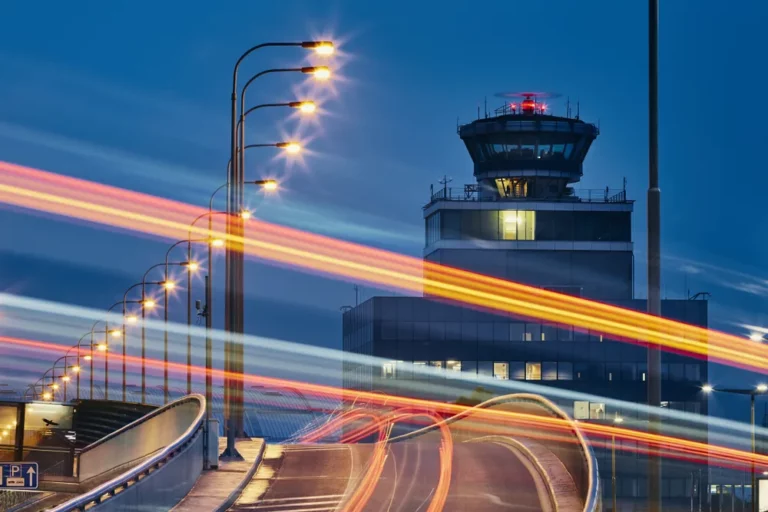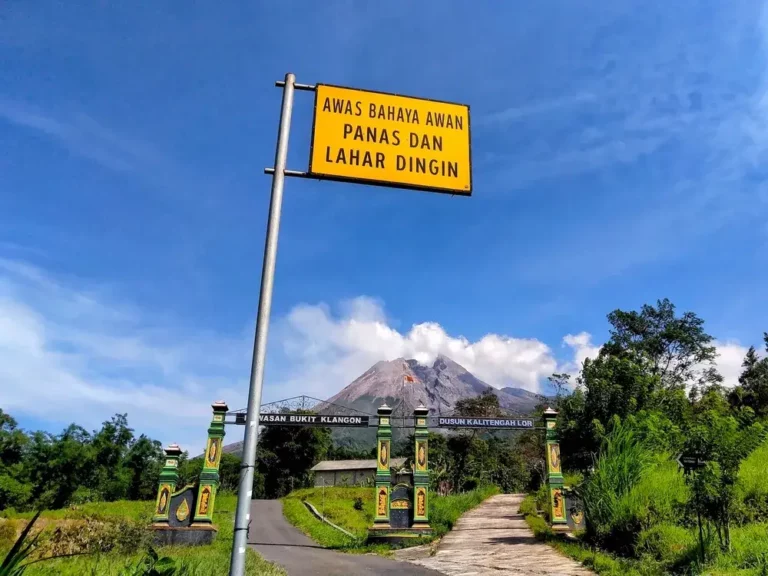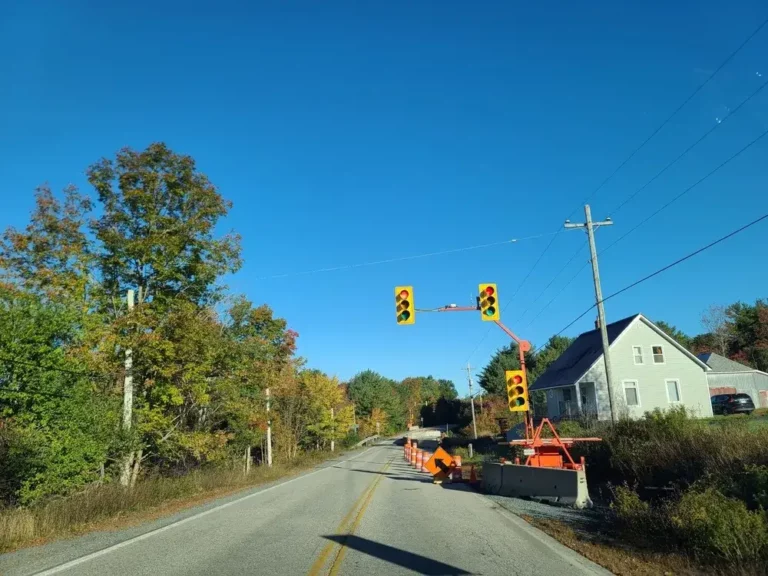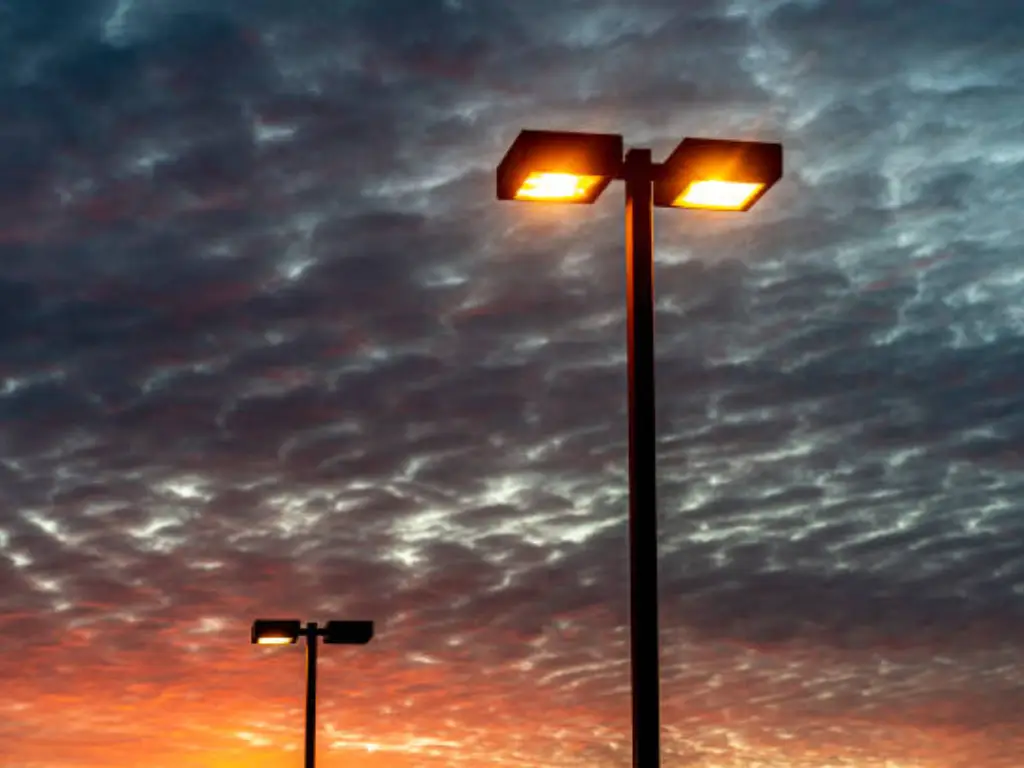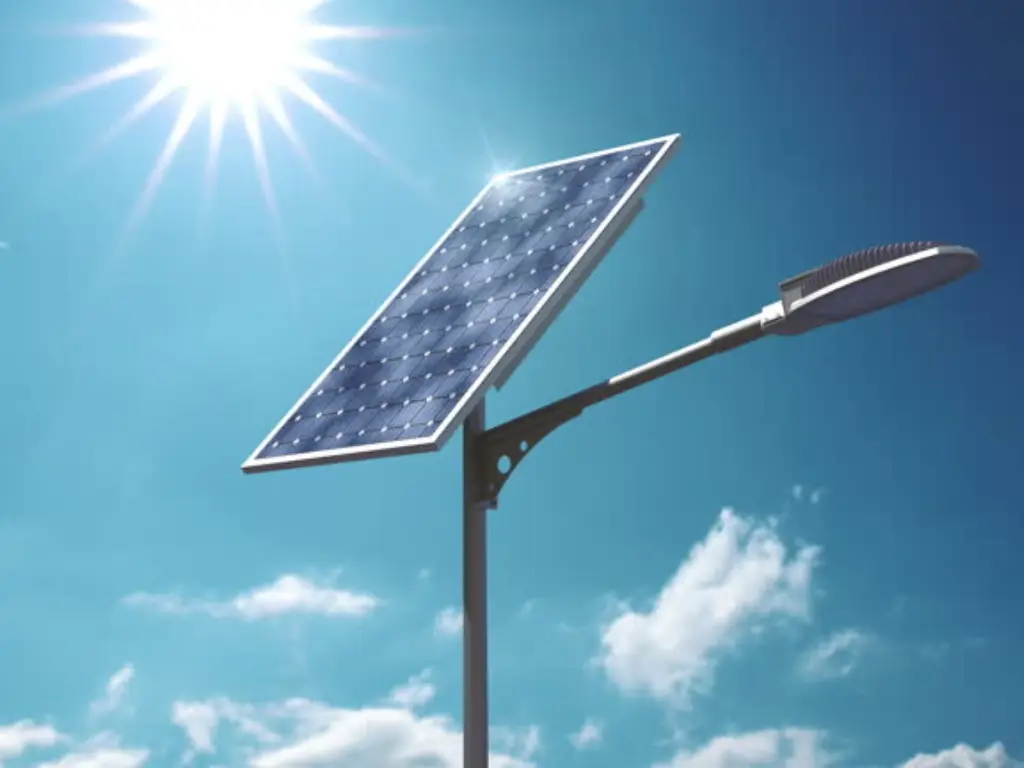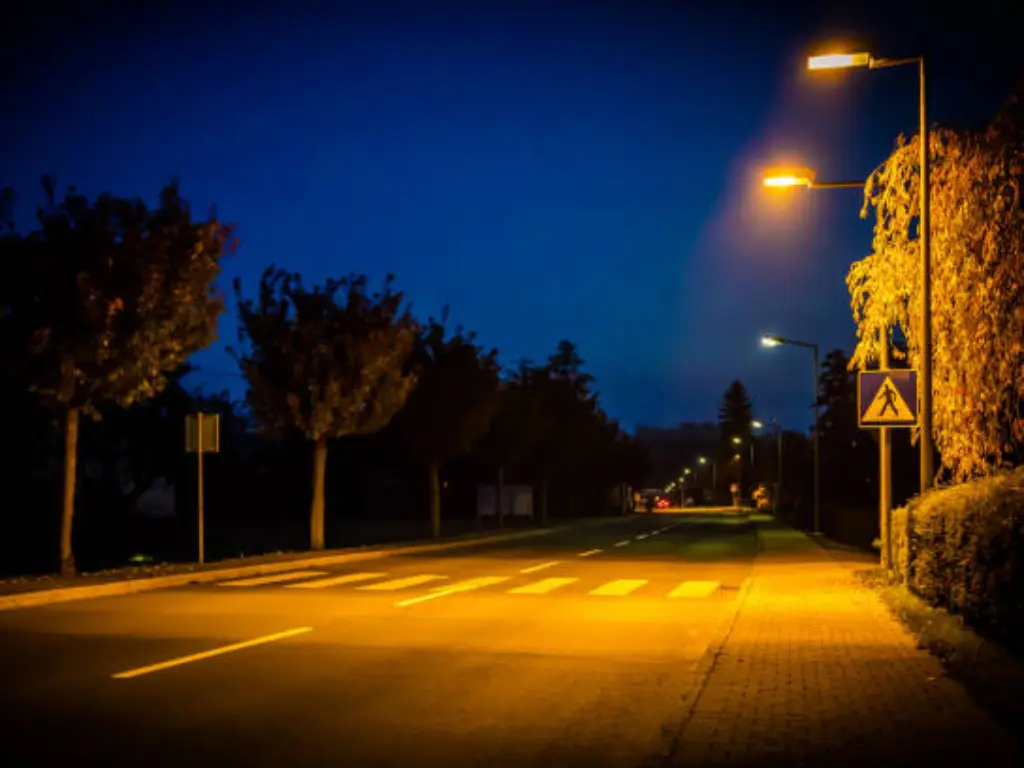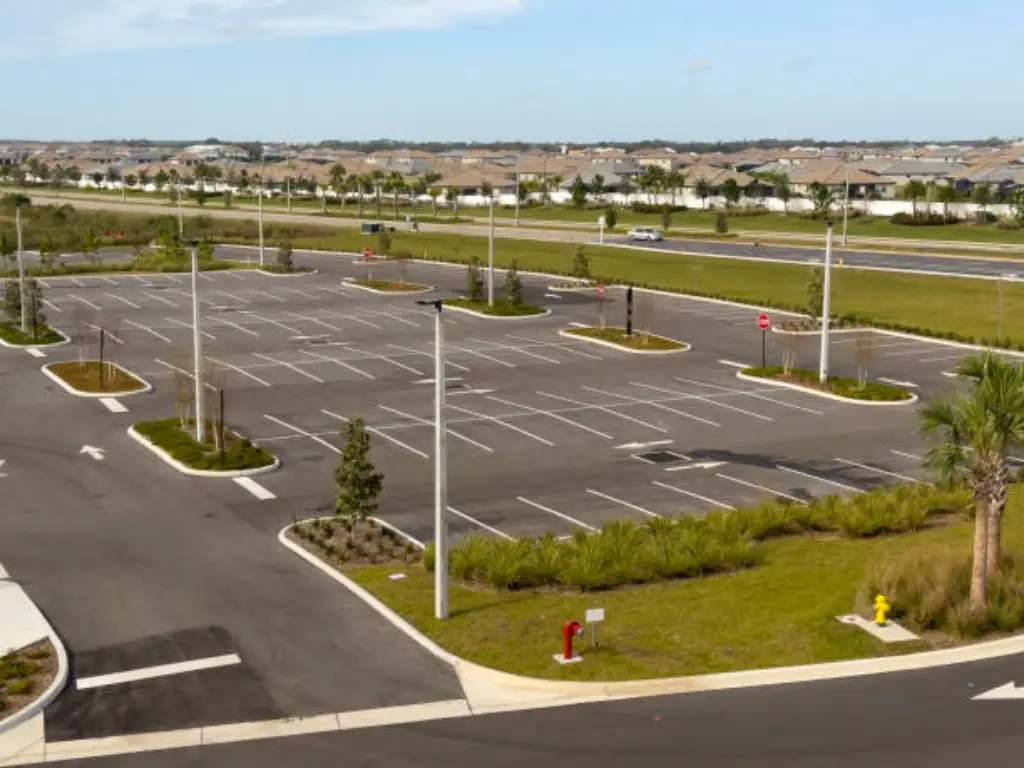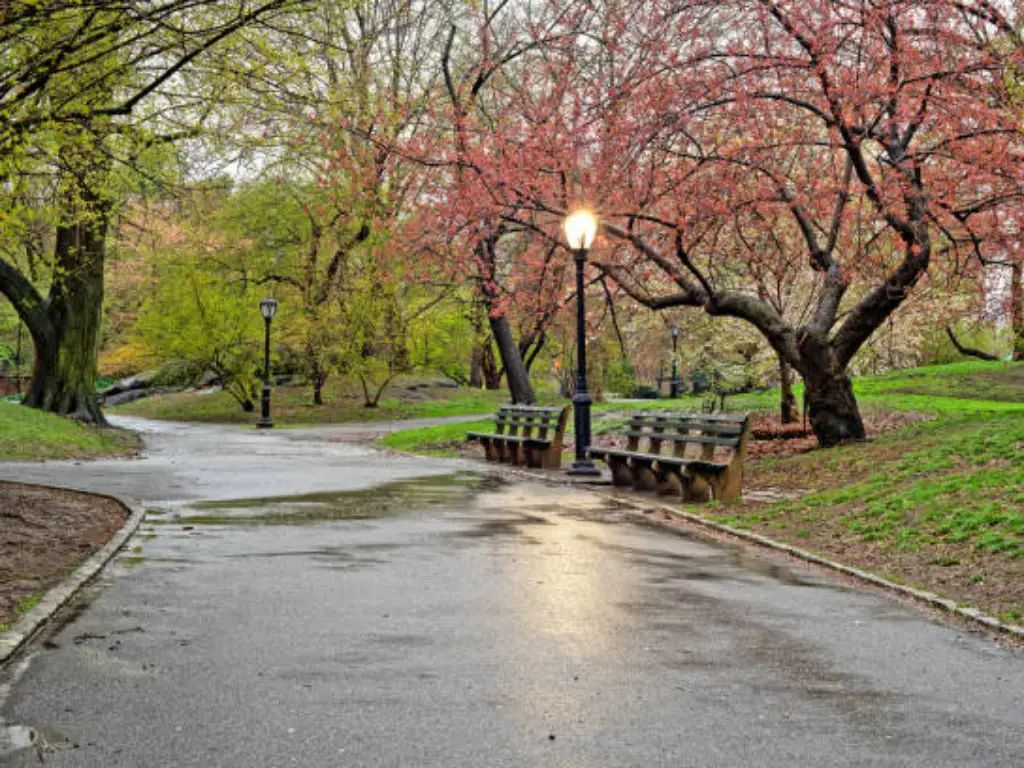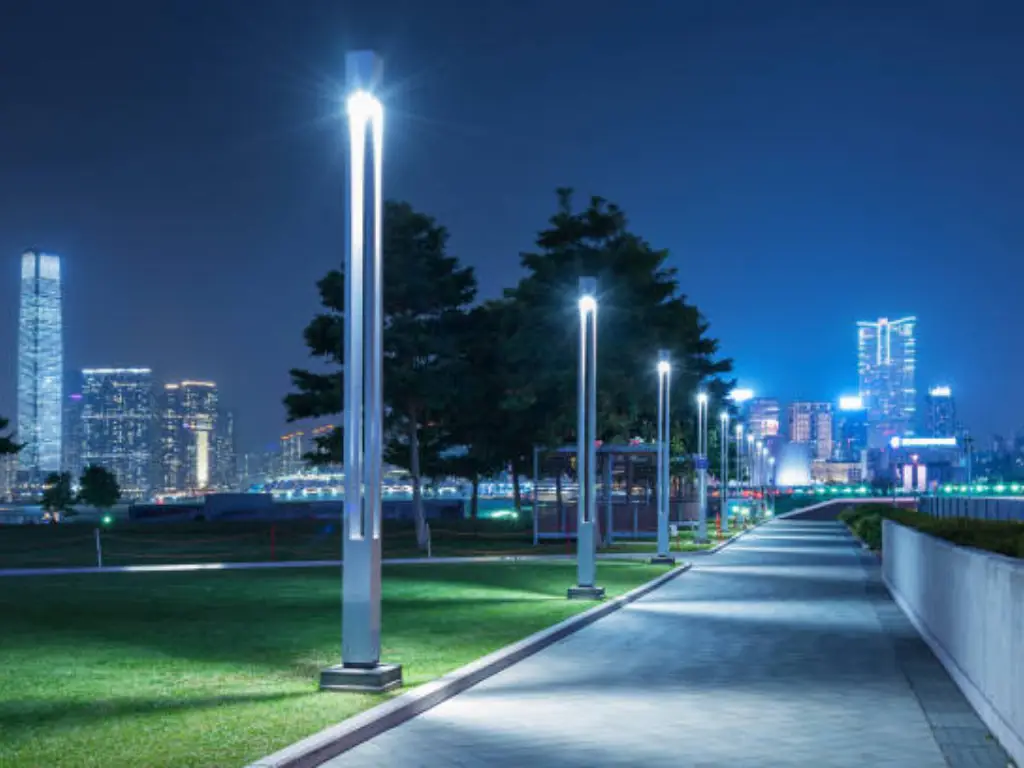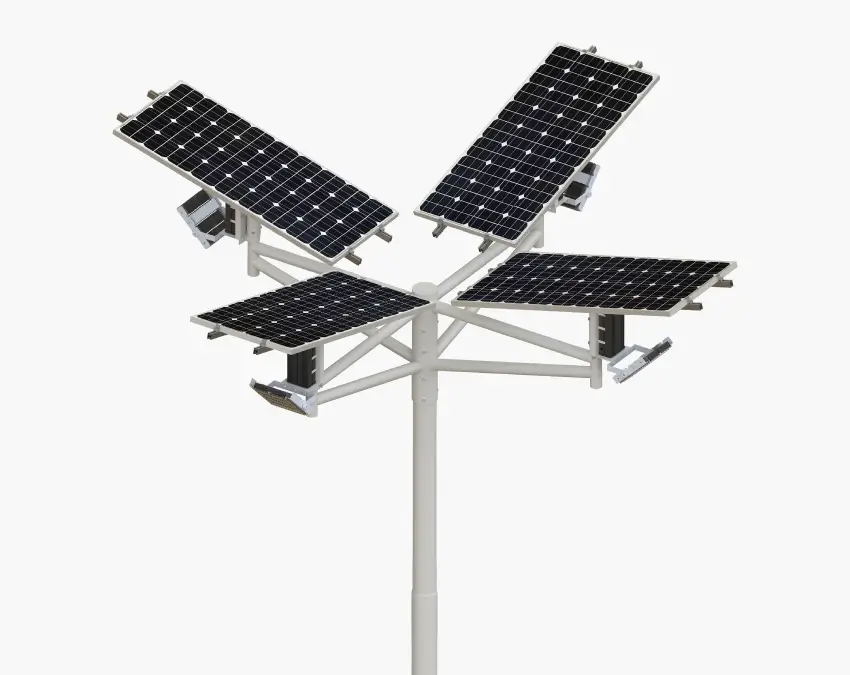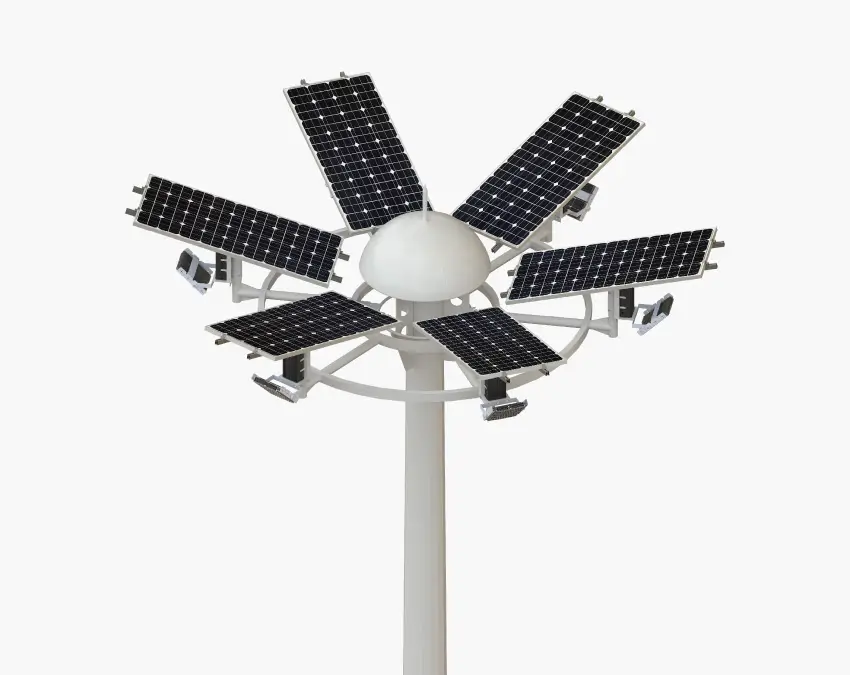Introduction
People recognize the term “street light” immediately which brings to mind roads and pathways that become illuminated during nighttime. The essential urban and rural infrastructure known as street light also goes by the names streetlamp and light pole and lamppost. This guide presents extensive explanations about these terms in addition to thorough discussions regarding different types of street lights with their development history and their essential functions within current social structures.
Understanding the Basics: Defining Street Lights
A street light functions as a raised illumination device that stands by road edges or paths or public spaces. The main purpose of street lights is to illuminate dark times by providing light which improves visibility for drivers and pedestrians and cyclists. The increased lighting visibility acts as a safety measure which reduces accidents while warning off criminals from public areas. These fixtures act as guardians by emitting continuous light which fights darkness to establish security for all users.
Exploring the Common Names and Terminology
The term “street light” functions as a general category which people often refer to using different synonyms. Streetlamps represent a traditional name for these fixtures which brings to mind older lighting equipment with decorative elements. The structural support system for elevating light sources is known as light poles or lamp poles. Lampposts serves as a common substitute for street lighting especially within British English and traditional settings. The engineering and municipal documentation sector uses light standard or lamp standard as technical terms. Different terminology used to describe these essential structures helps people understand multiple information sources related to these installations.
A Brief History of Street Lighting
Public lighting has evolved through many stages to become the advanced systems we observe in modern society today. The first street lighting solutions consisted of placing oil lamps or lanterns along the streets. Gas lighting emerged in the early 19th century to provide streets with their brightest and most reliable illumination ever seen. During the late 19th century electric street lighting emerged as public spaces started to receive their first electric lights through arc lamps. Incandescent lamps replaced arc lamps as street lighting technology because they provided better reliability. The modern era of LED and solar-powered street lights emerged from the high-intensity discharge lamps developed during the 20th century particularly the mercury vapor and sodium lamps that combined efficiency with long service life. The historical development demonstrates how humans have continuously pursued the elimination of darkness to establish safer and more accessible environments.
A Detailed Look at Different Types of Street Lights
Over the years, street lighting technology has evolved significantly, leading to a diverse array of types, each with its own characteristics, advantages, and typical applications.
| Type of Street Light | Description | Advantages | Typical Applications |
| Traditional High-Intensity Discharge (HID) Lamps | HID lamps include mercury vapor, high pressure sodium (HPS), and low pressure sodium (LPS) lamps. Mercury vapor lamps emit bright bluish-white light. HPS lamps emit a yellowish-orange hue, and LPS lamps offer monochromatic yellow light for efficiency. | Bright light output Long lifespan Cost-effective (initially) High-pressure sodium lamps provide utility for street lighting Lower pressure sodium lamps are highly efficient | Mercury vapor lamps: Sporting arenas, parking lots, streets HPS lamps: Street lighting LPS lamps: Tunnels, areas needing efficiency |
| Metal Halide Lamps | Metal halide lamps fall under the HID category. These lamps emit bright, white light with a balanced color range. While highly effective in providing bright, white light, their environmental impact and efficiency make them less favorable compared to newer technologies. | Bright, white light Balanced color range Effective for clear lighting in commercial or outdoor areas | Sports fields Outdoor commercial areas Areas requiring bright, clear lighting |
| Energy-Efficient LED Street Lighting | LED lights use semiconductor technology to produce light. They offer improved color ranges and color temperatures, delivering brighter, more crisp light. These lights are long-lasting, with lifespans often exceeding 50,000 hours. LEDs can be dimmed and controlled. | Long lifespan (up to 50,000+ hours) High energy efficiency Adjustable brightness for smart features Reduces operational costs through lower maintenance and energy savings | Roadways Urban infrastructure Smart city applications |
| Incandescent Street Lights | Incandescent lights were one of the first electric street lighting systems. They provide excellent color rendition but are inefficient and have short lifespans, making them largely obsolete. | Excellent color rendering Initially affordable | Initially used for street lighting Largely replaced due to inefficiency |
| Fluorescent Street Lights | Fluorescent lights work by directing electricity through a gas to illuminate the phosphor coating. These are more efficient than incandescent lights and generate less heat, with a longer operational life. | More energy-efficient than incandescent lights Longer lifespan Generates less heat | Parking lots Areas needing soft illumination |
| Compact Fluorescent Light (CFL) Street Lights | CFLs are small fluorescent bulbs that offer superior energy efficiency and longer operational times compared to incandescent bulbs. They have replaced both incandescent and halogen lights in various applications. | Superior energy efficiency Longer operational time Replaces incandescent and halogen street lights | Specific outdoor and public area lighting where energy efficiency is a priority |
| Solar-Powered Street Lights | Solar-powered street lights operate independently, using photovoltaic (solar) panels to collect sunlight, converting it into stored electricity used to power the lights at night. These lights are self-contained and do not require connection to the electrical grid. | Operates independently without infrastructure needs Clean, renewable energy Lower energy costs Reduces carbon emissions Minimal maintenance required | Remote areas Parks Rural roads Areas without traditional power connections |
Traditional High-Intensity Discharge (HID) Lamp
Street lighting was traditionally done using High-Intensity Discharge (HID) lamps which included mercury vapor, high pressure sodium (HPS), and low pressure sodium (LPS) lamps. Mercury vapor lamps produce bright, bluish-white light and were used in sporting arenas, parking lots, and even streets. While it does offer some utilitarian use, it is bulky, expensive, and contains environmental hazards due to mercury emissions. High pressure sodium (HPS lights) vapor lamps became more popular due to their price and long life. These sodium vapor lamps emit a yellowish-orange hue, which provides some utility for street lighting. Lesser-valued areas, like tunnels, appreciated the monochromatic yellow light illuminated by low pressure sodium (LPS) lamps, as it offers the best efficiency with little color rendering. In addition, metal halide lamps, which fall under the HID category, offer a more balanced color range and are commonly used in areas that require bright, clear light, such as sports fields and outdoor commercial areas. These lamps are highly effective in providing bright, white light, but their efficiency and environmental impact often make them less favorable compared to newer technologies.
Energy-Efficient LED Street Lighting
The introduction of LED technology has transformed how we approach public street lighting. Along with improvement in energy efficiency, LED street lights tend to last much longer (often surpassing 50,000 hours) than standard HID lamps. Compared to traditional lamps, LED street lamps offer an improved range of colors, including color temperature, which they emit, resulting in a brighter light. The white crispness that results increases visibility and elevates safety while using public infrastructure. Additionally, all and any forms of LEDs can be controlled and dimmed, offering options for dimmer light when traffic or pedestrian presence is minimal, which enhances the possibilities of using smart LED features that alter light when there is movement or traffic or pedestrians, allowing for optimal energy use with lower wattages. This contributes significantly to energy conservation in public lighting. The longevity of LEDs also reduces the need for frequent replacements, which is particularly beneficial for roadway lights. Overall operational cost is lessened due to the longevity, lower maintenance needs, and higher durability, making them preferred by municipalities across borders.
Other Notable Street Light Technologies
The implementation of HID and LED street lighting systems represents only a fraction of the available technologies for this purpose.
- Incandescent Street Lights functioned as one of the initial electric street lighting systems. The widespread replacement of these types of lights occurred because they provided excellent color rendition but were both energy-inefficient and had short lifespans while being initially affordable.
- Fluorescent Street Lights function by directing electricity through a gas which makes the phosphor coating illuminate. These lights surpass incandescent lights in efficiency and generate less heat while maintaining extended operational life. These fixtures found their applications in parking lots and other spaces that needed soft illumination.
- The Compact Fluorescent Light (CFL) Street Lights represent small fluorescent bulbs which deliver superior energy efficiency and longer operational time than incandescent bulbs. These fixtures replaced both incandescent and halogen street lights in specific applications.
The Sustainable Choice: Solar-Powered Street Lights
As modern societies put more emphasis on sustainability and green energy initiatives, solar-powered street lights offer an appealing alternative. These self-contained units utilize photovoltaic panels, or solar panels, which collect sunlight and convert it into stored electricity, which can then be used to power the light output at night. As solar street lights do not require trenching and wiring to the electrical grid, they are fit for remote areas such as parks and pathways where traditional connections are not feasible or economically sensible. These lights utilize clean and renewable energy, which helps in reducing carbon emissions and protecting the environment. Although some cases may require a higher initial investment, the overall savings from not having to pay for electricity, alongside the environmental impact, makes these lights an increasingly practical option.
| Advantage | Benefits/Explanation |
| Cost Savings and Energy Independence | Elimination of electricity bills; long-term cost savings; independence from fluctuating traditional energy prices; substantial savings for municipalities and property owners over the lifespan of the lighting system. |
| Environmental Friendliness and Sustainability | Clean and renewable energy source; zero greenhouse gas emissions during operation; contribution to a greener environment; helping to combat climate change; demonstration of commitment to sustainability; reduced reliance on fossil fuels. |
| Reduced Maintenance and Long Lifespan | Designed for durability and longevity with high-quality components; minimal maintenance compared to traditional grid-connected lights; long lifespan of components like LED luminaires and advanced batteries; reduced need for frequent replacements; lower maintenance costs and less disruption. |
Inlux Solar: Your Trusted Partner for High-Quality Solar Street Lighting Solutions
Inlux Solar operates as a leading solar street lighting provider through their mission to establish sustainable communities by delivering efficient and reliable illumination systems. The combination of quality assurance and innovative practices results in extended service life with exceptional performance outcomes. We maintain top-quality standards, adhering to national standards, by using Grade A high-efficiency solar cells together with brand new pouch-type LiFePO4 batteries that last for more than ten years through 4,000 cycles.
The solar street lights from our company utilize hot-dip galvanized steel poles that can handle winds up to 30m/s, accounting for high winds, while the anti-rust aluminum light fixtures maintain IP66-IP67, IK09-IK10 protection ratings against weather elements, road conditions, and vandalism. Each light utilizes LEDs with brightness levels 40% above standard lamps, providing enhanced visibility capabilities, particularly beneficial during dark nights. These lights exceed 50,000 hours of operating life for superior performance. The intelligent solar controller, equipped with extensive multiprotection functions, operates optimally to deliver a failure rate of less than 0.5%, ensuring reliability in all conditions. Inlux Solar engineers customized lighting solutions that use sustainable solar power to deliver dependable, high-quality illumination, which will maintain reliable lighting throughout lengthy periods, regardless of quantity of light available or environmental conditions.
Key Application Areas for Street Lights in Modern Infrastructure
| Application Area | Lamp Height | Lighting Requirements | Typical Usage Scenarios |
| Urban and Residential Streets | 8 – 12 meters | Moderate to high brightness; uniform lighting | Provides safety for both vehicles and pedestrians, enhancing security and reducing accidents. |
| Highways and Major Roads | 12 – 18 meters | High brightness; uniform, wide-area illumination | Ensures clear visibility for drivers, especially at high speeds and in adverse weather conditions. |
| Parking Lots and Garages | 6 – 10 meters | Moderate brightness; focused lighting for specific areas | Improves visibility for drivers and pedestrians, deters crime, and enhances safety in parking facilities. |
| Parks and Public Spaces | 4 – 8 meters | Low to moderate brightness; focused lighting on pathways | Extends usability of parks after dark for recreational activities and community engagement. |
| Walkways and Cycle Paths | 2 – 4 meters | Low brightness; focused lighting to avoid glare | Provides safe routes for pedestrians and cyclists, enhancing security and preventing accidents. |
| Remote and Rural Areas | 4 – 8 meters | Low to moderate brightness; solar-powered options | Suitable for areas without grid access, offering cost-effective and sustainable lighting solutions. |
| Construction Sites and Industrial Areas | 8 – 15 meters | High brightness; floodlights with wide coverage | Ensures worker safety during nighttime operations, illuminating large work areas. |
Urban and Residential Streets
The main function of street lighting in urban and residential areas is to provide safety for vehicles and pedestrians during their movements. The installation of appropriate lighting systems decreases accident risks because it creates better visibility of dangerous situations. Street lighting in residential zones creates security benefits by deterring criminal behavior. The energy-efficient LED and smart lighting systems used in street lighting provide adjustable brightness intended for maximum energy efficiency. The same lighting solution features different options which can adapt to lighting requirements encountered on main urban streets as well as peaceful residential neighborhoods.
Highways and Major Roads
Highway and main road lighting provides essential visibility while driving particularly fast because of its role in maintaining clear sight. The lighting system needs to provide sufficient visibility for drivers to detect all potential road hazards, traffic signs, and lane boundaries. High mast lights together with pole-mounted systems serve as primary lighting solutions for extended road areas. LED and metal-halide lamps, with their bright and powerful illumination systems, help prevent harsh light by offering a balanced level of brightness that ensures safety during foggy, rainy, or snowy conditions. The correct design of lighting controls glare and creates improved vision, which minimizes the chances of nighttime accidents, ensuring a safe driving environment even under harsh lighting conditions.
Parking Lots and Garages
The illumination of parking lots and garages through street lights provides functional benefits together with security protection. The illumination of spaces extends visibility which helps prevent accidents for moving vehicles and people. The illumination of parking areas acts as a crime prevention measure because criminals tend to avoid well-lit areas. The lighting solutions for this area include pole-mounted lights and wall-mounted fixtures and integrated lighting within the structure. LEDs are chosen because they use minimal energy while lasting long periods which keep these areas operational during nighttime hours.
Parks and Public Spaces
Proper street lighting in parks and public places boosts safety and enables the usability of parks after dark. Engaging with Well-lit parks like walking parks enables the community to take part in accessible social activities in the evenings. Recreational areas and walkways are using LED lights for parks because of their energy-saving features and even illumination, which means no harsh glare. These regions are solar lights powered because of their low maintenance properties and usefulness in well sunlit areas. Good lighting can also make public relocations aesthetically pleasing whilst helping to prevent accidents.
Walkways and Cycle Paths
The safe navigation of both pedestrians and cyclists through walkways and cycle paths demands specific lighting systems as their protection requirement. The areas require lighting systems that deliver sufficient brightness yet minimize glare because excessive glare endangers people walking or cycling. The appropriate lighting solution for pedestrian areas includes bollard lights and low-mast poles. The growing demand for solar energy solutions has gained prominence since they serve areas without grid connections particularly in remote rural territories. Paths illuminated with proper lighting decrease accidents along with providing comfort to people which results in increased night walkers and cyclists.
Remote and Rural Areas
The implementation of street lighting in distant and countryside areas serves as an essential measure for promoting both public security and resident safety because traditional utility connections are either unattainable or impractical. Solar-powered street lights represent the best combination of affordability and reliability because they operate independently from infrastructure requirements. These lights operate independently, which makes them suitable for isolated communities and rural roads. The application of solar lights enhances visibility with their bright light while simultaneously lowering energy costs through renewable power access, so they are the preferred choice in underprivileged areas.
Construction Sites and Industrial Areas
Necessary for safety operations during night shifts in construction areas and industrial sites is proper illumination. Workers need dependable and robust illumination solutions because extreme work situations prevail in these environments. Large areas receive illumination through high-intensity floodlights, which are installed on towers or poles for operational lighting. The lights need to maintain durability under wind, rain, and dust conditions. Businesses that provide sufficient lighting enable their workers to complete their duties safely while maintaining their productivity levels under all safety regulations.
Factors to Consider When Selecting the Right Street Lights
Choosing the appropriate street lights for a specific application involves considering several key factors:
- Illumination Requirements: The illumination requirements consist of both brightness levels expressed in lumens and light distribution patterns that need evaluation. Different settings in applications need specific illumination levels to guarantee safety while maintaining visibility.
- Energy Efficiency: System efficiency, together with light source energy consumption measured in watts, determines both operating expenses and environmental impact.
- Lifespan and Maintenance: The long-term cost-efficiency of lighting systems depends heavily on two factors: the anticipated lifetime of each component starting from the light source, extending to batteries, and the scheduled maintenance procedures, including their associated expenditure.
- Cost: The total expense from purchase to ongoing operation expenses, including power usage and maintenance needs thorough financial evaluation.
- Environmental Impact: The sustainability assessment must evaluate three key aspects: energy source management, light pollution reduction, and proper disposal of all system elements.
- Aesthetics: The visual appearance of light fixtures and poles requires evaluation because residential and historically significant areas need attention to design.
- Control and Smart Features: The remote management capabilities through control and smart features enable users to optimally utilize energy and function their lighting system by dimming lights and scheduling programs, and enabling motion sensitivity.
- Pole Height and Material: The pole height, together with its material selection, determines both light distribution patterns and the area of illumination. Production employs both galvanized steel due to its enhanced durability and corrosion protection, yet lightweight aluminum because of its resistance to corrosion effects. The recommended pole height for different applications starts at 3 feet for gardens and extends to 6-9 feet for residential walkways and reaches 9-14 feet for streets before exceeding 33 feet for highway applications.
- Light Fixture Specifications: The durability of light fixtures depends on two vital specifications, such as IP rating, which protects against dust and water ingress, and the IK rating, which measures impact resistance in different environmental conditions.
- Lighting Standards: The implementation of lighting standards at different heights ensures safety and optimal performance by meeting local and national, and international requirements. The standards establish required illumination thresholds that apply to various public areas and road types.
Conclusion
The various names describing essential outdoor lighting fixtures, starting from basic street light and moving towards more specific light standards, demonstrate both technological development and historical diversity. Knowledge of street lighting options, including HID lamps with their particular uses and LEDs with their energy-saving capabilities and solar-powered systems, enables better choices for public and private infrastructure development. Solar street lights from Inlux Solar have an increasing future role in dominating global lighting because they maintain safety and sustainability while delivering reliable service for many generations.

